
|
 |
 |
 |
 |
 |
EGG‑NEWS.com
Egg Industry News, Comments & More by
Simon M.Shane
|
 |
 |
 |
 |
 |
 |
Egg Industry News
Commodity Report
|
05/16/2024 |
|
WEEKLY ECONOMY, ENERGY AND COMMODITY REPORT: MAY 16th 2024.
OVERVIEW
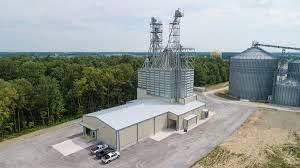 Prices for corn and soybeans diverged this week. For July delivery corn was down 0.4 percent but soybeans were up 0.8 compared to last week. Soybean meal was down 0.8 percent. Prices were influenced by technical selling arising from geopolitical concerns and revised projections for crop sizes in Brazil and Argentine. Secondary factors included disruption in shipping in the Red Sea and Panama Canal, carryover from the 2023 U.S. crop, export orders and the predicted ending stocks of corn and soybeans for the 2024 crop. The May WASDE Report updated production forecasts and prices based on planting approaching the midway mark, and the possible transition to a La Nina event by the third quarter. Prices for corn and soybeans diverged this week. For July delivery corn was down 0.4 percent but soybeans were up 0.8 compared to last week. Soybean meal was down 0.8 percent. Prices were influenced by technical selling arising from geopolitical concerns and revised projections for crop sizes in Brazil and Argentine. Secondary factors included disruption in shipping in the Red Sea and Panama Canal, carryover from the 2023 U.S. crop, export orders and the predicted ending stocks of corn and soybeans for the 2024 crop. The May WASDE Report updated production forecasts and prices based on planting approaching the midway mark, and the possible transition to a La Nina event by the third quarter.
At noon EDT on May 16th the CME price for corn was down 0.4 percent compared to the previous week to 457 cents per bushel for July delivery. Corn price was influenced by ethanol demand and the proportionally high ending stock from the 2023 crop. Export orders for the current market year have increased in response to lower prices. Volumes and prices are indirectly influenced by higher wheat prices, events in the Black and Red Seas. Orders by China resumed at the end of the 2022-2023 market-year and have extended through May despite a moderately high, but declining Dollar Index and increased ocean freight but offset by a low FOB prices. Total exports for the current market year are 28.2 percent higher than for the corresponding week during the 2022-2023 year.
Soybeans traded at 1,215 cents per bushel for July 2024 delivery, up 0.8 percent over the week. Slightly higher prices were attributed to trading, less farm selling and projections of availability from the 2024 Brazil and Argentine harvests. Total exports for the current market year are 17.8 percent lower than for the corresponding week in the 2022-2023 year.
Soybean meal traded at $371 per ton for July delivery, down 0.8 percent. Price was influenced by demand coupled with high crush volumes for consecutive months from December 2023 through March 2024. Price will fluctuate to reflect the CME price for soybeans and the demand for biodiesel despite the adverse financial situation in this sector. The market previously responded to the increased 2023 crop and higher stocks together with projections for 2024 extensively revised in the May WASDE Report .
WTI was $1.09 (+1.4 percent) higher from last week to $78.87 on May 15th with moderate to lower world demand in relation to supply. Price is up on the balance between supply and demand despite the reduction in attacks on shipping in the Red Sea, and the cessation in hostilities between Israel and Iran. It is accepted that U.S. production is a moderating influence on price, attaining 12.9 million barrels per day in March with ample reserves. An upward trajectory in price may occur if production cuts by OPEC amounting to 2 million barrels per day and extended through June actually materialize. There was a small upward move in price during the week ( range $77.75 to $78.90). Crude oil inventory in the U.S., other than the Strategic Reserve, was down 1.0 percent to 35.0 million barrels last week. High U.S. production is constraining domestic and international prices but the rise in energy cost during past weeks is reflected in inflation restraining the FOMC from lowering the benchmark interest rate.
Economic data released during the past week (Q1 GDP; PCE, Confidence, Productivity, Employment) confirmed slower growth and persistent inflation. The data-driven Federal Reserve FOMC passed on a lowering of rates on May 1st and will be disinclined to reduce the benchmark interest rate until September at the earliest.
Factors influencing commodity prices in either direction over the past four weeks included:-
- Weather conditions in areas of the World growing corn and oilseeds especially in Brazil and also Argentine with favorable rain recently under the influence of a strong El Nino event. The 2023 U.S. harvest was completed ahead of the corresponding weeks in 2022 with higher carryover and lower exports of soybeans. (Downward pressure on prices). Planting is almost complete for the “new” crop of 2024 but has been disrupted by flooding in the southern production states.
- Geopolitical considerations continue to move markets, especially in the Mideast. Ongoing attacks on Ukraine port facilities have impacted prices of wheat, corn, oilseeds and vegetable oils. Loaded bulk vessels are sailing from Black Sea and Danube River ports using the ‘Humanitarian Corridor” to various destinations. This route is operational despite threats by the Russian Federation to mine the entrance to ports and deployment of airborne missiles. Exports from Ukraine are approaching 1.5 million metric tons per week with a total of 26 million metric tons market year through February, down 11 percent from the equivalent period for 2022-2023 year. Grain production in Ukraine during the current year will be lower than 2022/2023 (Downward pressure on corn and wheat and an indirect effect on soybeans)
- Macroeconomic U.S. factors:-
- Most economists in academia and the private sector are still confident of a “soft landing” for the economy despite the release of the Q1 2024 GDP and recent economic parameters including the ECI, CPI and PPI and with fluctuation in bond rates. Annual inflation as measured by CPI declined from 8.9 percent in June 2022 to 3.5 percent in March 2024. This is in part a response to a series of 11 FOMC rate raises that curbed inflation and cooled the labor market but without precipitating unemployment. There is evident stability in the bank sectors in both the U.S. and Europe. A rise in energy prices is contributing to persistence of inflation.
- The Federal Reserve held the benchmark interest rate steady at the monthly FOMC meeting on May 1st 2024, the sixth sequential pause. The Federal Reserve commentary indicated that the rate would be held at 5.25 percent until a pivot with possibly less than two reductions of 25 basis points each in 2024, after the September meeting at the earliest. Chairman Powell in Congressional testimony and documented in FOMC minutes has indicated that decisions would be based on demonstrated progress in reducing inflation as confirmed by a basket of key economic data, towards an annual 2.0 percent target by mid-2025. Market optimism with projections of five reductions during 2024 was evidently premature.
- The April 25th Bureau of Economic Affairs reconfirmed the advanced estimate of Q1 2024 GDP at 1.6 percent, below the consensus estimate of 2.4 percent. The Q1 GDP value was influenced by spending by both consumer and government-sectors and with higher investment in housing. By comparison Q4 2023 GDP growth was 3.4 percent. Growth in GDP attained 2.5 percent in 2023 up from 1.9 percent in 2022. The Personal Consumption and Expenditure Index For Q1 (excluding food and energy) was up 3.7 percent annualized, higher than 2.0 percent in Q4 2023.
- The April 26th Bureau of Economic Analysis released the March Personal Consumption and Expenditure Price Index. The core index (excluding food and energy) was up 0.8 percent from the previous month and 2.8 percent year-over-year. This was in line with estimates. The Headline PCE Index was up 2.7 percent year-over-year, above an estimate of 2.6 percent. On an annual basis the price of goods was unchanged, services were up by 4.0 percent, food by 1.5 percent and energy by 2.6 percent. The headline PCE is closely followed by the Federal Reserve and confirms persistent inflation holding above an annual target of 2.0 percent.
- The May 15th Bureau of Labor Statistics release of the April 2024 CPI confirmed a 0.3 percent increase from March, 0.1 percent below forecast. The annual increase of 3.4 percent was unchanged from March and consistent with the anticipated value. The increase in the core value (excluding food and energy) was up 0.3 percent from March and 3.6 percent for the 12-month period. Food at home was down 0.2 percent from the previous month. The category of ‘meat, fish and poultry’ was down collectively by 1.0 percent from the previous month. Food away from home was up 0.3 percent from March. On an annual basis all food was up 2.2 percent with food at home up 2.2 percent and food away from home up 4.1 percent. Energy was up 2.1 percent due to gasoline (+1.2) and electricity (+5.1) offset by natural gas (-1.9 percent) in April. The shelter category was up 0.4 percent for the month and 5.5 percent over the past year. The macro trend is inclining towards reduced inflation but restrained by to a rise in energy prices detracting from deflation. The CPI heavily influences FOMC rate decisions.
- The April Producer Price Index for Final Demand (PPI) released on May 14th was up by 0.5 percent from March compared to an expectation of 0.3 percent. The PPI was up 2.2 percent over the past 12-months. This is compared to a 6.4 percent increase in 2022. The core PPI value excluding volatile fuel and food, was up 0.5 percent for April compared with 0.4 percent for March and up 3.1 percent for the 12-month period. Food was down 0.7 and energy up 2.0 percent respectively.
- A Federal Reserve release on April 16th confirmed that industrial production rose 0.4 percent in March. Capacity utilization was fractionally higher at 78.4 percent, 1.2 percent below the 1972-2020 average.
- The April 24th report on Durable Goods Ordered during March 2024 was higher by 2.6 percent to $283 Billion compared to a revised value of 0.7 percent or $376 Billion in February. Transportation and specifically aircraft orders were up 7.7 percent. Excluding the Transportation component, new orders increased by 0.2 percent in March compared to February. Shipments of durable goods were essentially unchanged from February that in turn was up 1.2 percent from January 2024 impacted by severe weather.
- The May 15th release of retail and food sales data showed a monthly rise of 0.4 percent in April down from 0.7 percent in February. Retail sales in April 2024 were up 3.0 percent from the corresponding month in 2023. The Federal Reserve FOMC closely monitors retail sales as a measure of the trend in inflation.
- The May 1st release by the Institute for Supply Management (ISM®) documented the Manufacturing Index for April at 49.2 down from 50.3 in March and below the consensus of 50.0. New orders fell to 49.1 (54.6, March) and Production attained 51.3 (54.6 March).
- On April 30th the U.S. Bureau of Labor Statistics reported a 1.2 percent increase in the Employment Cost Index (ECI) over the 1st quarter of 2024 against a consensus estimate of 0.9 percent. The year-over-year increase was 4.4 percent compared to an estimate of 4.0 percent and with benefit costs up by 3.7 percent. The March ECI of 1.2 percent compares with a value of 0.9 percent for the 4th quarter of 2023. The ECI is closely followed by the Federal Reserve FOMC and further reduces the possibility of a rate cut before September at the earliest.
- The April 23rd release of the S&P Global Composite U.S. Manufacturing PMI for April fell to 50.9 compared to revised 52.1 in March. The Global Services PMI fell from 51.7 in March to 51.7 in April.
- The Conference Board Consumer Confidence Index released on April 30th for April, fell to 97.0 points from a revised 103.1 for the preceding four-week period. The index was lower than a consensus estimate of 104.0. The Present Situation Index was down to 142.9 in April compared to 157 in March. The Expectations Index fell to 66.4 in April from a revised 74.0 in March. Values below 80.0 suggest a future recession
- The May 10th University of Michigan Preliminary Index of Consumer Sentiment for May fell sharply by 9.8 points to 67.4 for May, down from a revised value of 77.2 in April. The Index was up 14.0 percent from the corresponding period in 2023. Both the Current Economic Index (68.8 down from 79.0 in April) and the Index of Consumer Expectations (66.9 down from 76.0 in April) denote a decline in consumer sentiment influenced by stable but high interest rates and inflation despite geopolitical concerns. Inflation expectations 12-months hence moved higher from 3.2 to 3.5 percent among those surveyed.
- Non-farm payrolls added 175,000 in April, as documented by the Bureau of Labor Statistics in a May 3rd release. This was less than the anticipated 240,000, and should be compared to the revised March value of 315,000. The moderate increase was attributed to workers hired in the health care and government sectors. The unemployment rate rose to 3.9 percent with 6.5 million unemployed and with 1.3 million in the long-term category. Real average hourly earnings during April showed a 0.2 percent increase over March to $34.75 . Average hours worked fell 0.1 percent to 34.7 per week in April. Labor participation was unchanged at 62.7 percent in April. Wage rates increased 3.9 percent over 12-months, the lowest gain since June 2021. Wage rates are closely followed by the Federal Reserve FOMC.
- The Bureau of Labor Statistics Job Openings and Labor Survey report released on May 1st estimated 8.5 million job openings at the end of March, down 1,100,000 from March 2023 and consistent with estimates. The March job openings number was the lowest value in 35 months and compares with the March 2022 value of 12.2 million during COVID.
- The seasonally adjusted initial jobless claims figure of 222,000 released on May 16th for the week ending May 11th falling 10,000. The Weekly value corresponded to the Reuter’s estimate of 220,000. The four-week moving average was up 2,500 to 217,750. The Bureau of Labor Statistics estimated 1.794 million continuing claims for the week ending May 3rd . There is evidence from data over the past three months that the labor market is cooling although still tight despite sporadic weekly fluctuation in new claims.
- The May 2nd Bureau of Labor Statistics report recorded a 0.3 percent increase in non-Farm Productivity for Q1 2024 down from 0.7 percent in Q4 2023. Labor cost increased 4.7 percent over the past 12 months.
- The ADP® reported on May 1st that private payrolls increased by 192,000 in April, down 16,000 from the revised 208,000 in March and compared to the Dow Jones estimate of 183,000 jobs. The increase in employment was mostly in the construction, services and hospitality sectors. Annual pay was up 5.0 percent year-over-year, down from 5.1 percent in March and the lowest value since August 2021. The increase will not directly influence the probability of short-term future changes in interest rate since the ADP® is regarded by the FOMC as an unreliable statistic
FACTORS INFLUENCING COMMODITY PRICES
- The 2023 harvests of corn and soybeans were completed by late November 2023. The May 10th WASDE projected acreage to be planted, yields, crop size and ending stocks for the 2024 crop.
- It is evident that both polarization in the closely divided chambers of Congress and intra-party conflict between and within both sides of the aisle in the House delayed adoption of appropriations bills. Passage of the 2023 Farm Bill will be contentious and is subject to a 12-month extension as a stop-gap measure. Progress on the 2023 Farm Bill has been impeded by contention over SNAP eligibility and other entitlements that collectively represent 75 percent of total expenditure. The August 2nd downgrade of U.S. debt from AAA to AA+ by Fitch Ratings recognizes Congressional dysfunction. On November 10th 2023 Moody’s downgraded U.S. credibility from ‘stable’ to ‘negative’ based on an inability to pass required fiscal legislation. After four Continuing Resolutions the House and Senate passed six appropriations bills including the FDA and USDA, avoiding a March 8th partial shutdown of the Federal Government. Agreement was concluded on the remaining appropriations bills on March 23rd maintaining Federal funding through October 2024. Currently the position of the Speaker of the House is more secure suggesting progress in passing needed legislation in the declining weeks of the 118th Congress.
- The delayed 2023 Farm Bill is mired in conflict in both the House and Senate. There is no consensus on major issues comprising the magnitude of SNAP payments and eligibility and requested price supports for crops. The Chair of the Senate Agriculture Committee Sen. Debbie Stabenow (D-MI) is standing firm on maintaining both SNAP-WIC benefits and climate remediation funding even if the Farm Bill is delayed through to the 119th Congress
- The May 10th WASDE #648 Projected both corn and soybean production parameters with a potential record soybean harvest for the 2024 crop. There will be ample world availability of ingredients although inequitable distribution will result in shortages in some nations. Soybean exports will comprise 38.0 percent of the 2024 U.S. crop with a 30.7 percent increase in ending stock to 445 million bushels as compared to the April WASDE Report. The projection of corn exports suggests that exports will amount to 13 percent of the2024 crop with ending stocks down 0.9 percent to 2,102 million bushels.
- Rabobank projected the soybean crop in Brazil at 153 million metric tons on April 4th albeit before flooding. This value is higher than the projection by CONAB (the Soy production association in Brazil) at the midpoint of the soybean harvest, of 147 million metric tons (5,401 million bushels) down from a previous estimate of 155 million metric tons (5,695 million bushels). Exports of 100 million metric tons (3,674 million bushels). It is anticipated that Brazil will crush 56 million metric tons (2,057 million bushels). If CONAB is correct the harvest will be 7 million metric tons (269 million bushels) lower than the 2023 record crop. Brazil exported 7.0 million metric tons (257 million bushels) of soybeans to China over the first two months of 2024, double the quantity shipped to this nation over the corresponding two months in 2023.
- Corn production in Brazil for the 2023-2024 market year will attain 124 million metric tons (4,801 million bushels) from all three sequential harvests. But down seven percent from the previous year. Brazil is projected to export of 54 million metric tons (2,125 million bushels). Argentine will produce 50 million metric tons of corn (1,968 million bushels), double compared to the previous year impacted by drought. (Lower prices in the future subject to favorable reports on crop progress and actual harvests)
- The Dollar Index (DXY) was 104.2 at close on May 15th, down 1.2 points from last week based on a lower CPI and other data suggesting a possible reduction in benchmark interest rates in the fall. The DXY has ranged from 99.0 to 107.0 over the past 52 weeks. The dollar index influences timing and volume of export orders and indirectly the price of WTI crude.
EXPORTS
The FAS Export Report for corn, released on May 16th for the week ending May 9th confirmed that outstanding export orders for corn amounted to 12.97 million metric tons (510.50 million bushels). Net orders for the past week for the 2023-2024 market year amounted to 0.74 million metric tons (29.21 million bushels). Shipments recorded during the past working week amounted to 0.95 million metric tons (37.47 million bushels). For the current market year to date cumulative export of 35.40 million metric tons (1,392 million bushels) is 28.2 percent higher compared to the equivalent week of the previous market year. For market year 2024-2025 outstanding orders attained 2.31 million metric tons (90.72 million bushels) with 128,000 metric tons (5.05 million bushels) ordered this past week
(Conversion 39.36 bushels per metric ton. Quantities in metric tons rounded to 0.1 million)
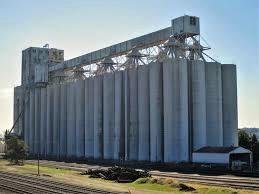 The FAS Export Report for soybeans covering the week ending May 9th reflecting market year 2023-2024, recorded outstanding export orders amounting to 3.48 million metric tons (127.82 million bushels). Net orders this past week attained 0.27 million metric tons (9.76 million bushels). Shipments for the past working week attained 0.44 million metric tons (16.28 million bushels). For the current market year to date cumulative exports of 39.12 million metric tons (1,437 million bushels) are 17.8 percent lower compared to the equivalent week of the previous market year. Outstanding orders for the 2024-2025 market year amount to 0.89 million metric tons metric tons (32.71 million bushels) with 25,200 tons ( 0.92 million bushels) ordered this past week. The FAS Export Report for soybeans covering the week ending May 9th reflecting market year 2023-2024, recorded outstanding export orders amounting to 3.48 million metric tons (127.82 million bushels). Net orders this past week attained 0.27 million metric tons (9.76 million bushels). Shipments for the past working week attained 0.44 million metric tons (16.28 million bushels). For the current market year to date cumulative exports of 39.12 million metric tons (1,437 million bushels) are 17.8 percent lower compared to the equivalent week of the previous market year. Outstanding orders for the 2024-2025 market year amount to 0.89 million metric tons metric tons (32.71 million bushels) with 25,200 tons ( 0.92 million bushels) ordered this past week.
(Conversion 36.74 bushels per metric ton)
For the week ending May 9th 2023 outstanding orders for soybean meal and cake attained 2.87 million metric tons. Net orders this week for soybean meal and cake amounted to 300,400 metric tons. During the past week 211,200 metric tons of meal and cake combined was shipped. The quantity exported to date is 13.9 percent higher than the volume for the corresponding weeks of the previous market year. For the next market year outstanding sales have attained 398,000 metric tons with 31,100 tons ordered this past week.
 
|
Egg Week
|
05/15/2024 |
|
USDA Weekly Egg Price and Inventory Report, May 15th 2024.
Market Overview
- The average wholesale unit revenue values for Midwest Extra-large and Large sizes were down 5.8 percent this past week. Medium size was down 5.7 percent. National wholesale price for large in cartons at $1.47 per dozen was approximately $0.15 per dozen above the 3-year average of $1.50 per dozen and up $0.90 from the corresponding week in 2023 at $0.75 per dozen. This past week shell egg inventory was down 7.8 percent, compared to a rise of 2.7 percent in stock the previous week.
- Although there has been a weekly increase in pullet flocks transferred to laying houses, hen numbers are constrained by the loss of close to 13 million hens due to HPAI on twelve complexes holding from 250,000 to 2.6 million hens during the 4th Quarter of 2023. Losses have not yet been completely replaced. During April close to 8.4 million hens collectively were depopulated in a sequence comprising one complex in Texas and three related facilities under common ownership in Michigan in addition to a breeder complex in New Mexico.
- This past week chains apparently widened the spread between delivered cost and shelf price. This could result in a continued rise in generic stock unless offset only by a proportional rise in demand that appears unlikely and only with constant re-ordering to fill the pipeline through the back-half of May. Discounters are holding prices on generics influencing mainstream retail stores. Eggs are still highly competitive in price against the comparable costs for other protein foods.
- Total industry inventory was down by 6.0 percent overall this past week to 1.63 million cases with a concurrent 0.9 percent increase in breaking stock, following an 4.5 percent increase during the preceding processing week. Demand for egg products has fallen into May attributed to less home-baking and entertaining. Egg products are required for the food service and manufacturing sectors and for exports that increased in February.
- It is now apparent that the inventory held by chains and other significant distributors may be more important over the short term in establishing wholesale price compared to the USDA regional inventory figures. Changes in stock held by DCs and in the pipeline as determined by weekly orders are probably responsible for small cyclic fluctuation in weekly industry stock, especially into and after a holiday weekend.
 |
- The number and extent of future possible outbreaks during the spring and fall months of 2024 cannot be projected but sporadic cases in backyard poultry, isolation from wild migratory and predatory birds and close to 40 dairy herds in nine widely diverse states is a cause for concern. More surveillance information should be released by USDA-APHIS as it becomes available concerning the prevalence rate of carriers among resident domestic free-living birds and a review of molecular and field epidemiology for the 2022 spring and fall waves of HPAI. The USDA has yet to identify and release specific modes of transmission for the 2022-2023 epornitic including likely airborne spread from wild birds and their excreta over short distances.
- The current relationship between producers and chain buyers based on a single commercial price discovery system constitutes an impediment to a free market. The benchmark price appears to amplify both downward and upward swings as evidenced over the past two years. A CME quotation based on Midwest Large, reflecting demand relative to supply would be more equitable. If feed cost is determined by CME ingredient prices then generic shell eggs should be subject to a Midwest Large quotation.
- According to the USDA the U.S. flock in production was apparently down by 0.4 million hens (0.1 percent) to a new level of 305.8 million for the week ending May 15th The stated total flock of 311.1 million included about one million molted hens that will resume lay during coming weeks plus 4.5 to 5.0 million pullets scheduled to attain production. Given the latest figures it is estimated that the producing flock is at least 17 to 20 million hens lower than before the onset of HPAI in 2022. In January 2024 the USDA adjusted figures to account for depopulation of 13 million hens spread over the last quarter of 2023. There were evident discrepancies between published figures and the theoretical number of hens over successive weeks taking into account known losses and predetermined pullet replacements. The April loss of 8.4 million hens is not reflected in data released over the past five weeks. It is hoped that the USDA agency responsible for publication of flock size will get their act together and coordinate with APHIS to record the number of depleted flocks and promptly provide accurate data. Figures released on May 8th overestimate flock size
- The ex-farm price for breaking stock (rounded to one cent) was down 9.7 percent to $1.02 per dozen.Checks delivered to Midwest plants were down 9.5 percent to $0.95 per dozen this past week. Prices for breaking stock should follow the wholesale price for shell eggs usually with a lag of about one to two weeks.
The Week in Review
Prices
According to the USDA Egg Market News Reports released on May 13th 2024, the Midwest wholesale price (rounded to one cent) for Extra-large was down 5.7 percent from last week to $1.49 per dozen. Large was down 5.8 percent to $1.47 per dozen. Mediums were down 5.3 percent to $1.43 per dozen delivered to DCs. Prices should be compared to the USDA benchmark average 4-Region blended nest-run cost of 75.6 cents per dozen as determined by the Egg Industry Center based on USDA data for April 2024. This value excludes provisions for packing, packaging materials and transport, amounting to 57 cents per dozen as determined in mid-2023 from an EIC survey (with a low response) and now realistically 60 cents per dozen.
Currently producers of generic shell eggs should be operating with small positive margins irrespective of region and customer-supply agreements. The progression of prices during 2023 and 2024 to date is depicted in the USDA chart reflecting three years of data, updated weekly.
The May 13th edition of the USDA Egg Market News Report confirmed that the USDA Combined Region value (rounded to the nearest cent), was down to $1.64 per dozen delivered to warehouses for the week ending May 10th 2024. This average price lags current benchmark Midwest weekly values by one week. The USDA Combined range for Large in the Midwest was $1.56 per dozen. At the high end of the range, the price in the South Central region attained $1.72 per dozen. The USDA Combined Price last week was approximately $0.15 per dozen above the 3-year average of $1.50 per dozen. This past week Midwest Large was approximately $0.90 per dozen above the corresponding week in 2023 that was falling from a peak price of $3.70 per dozen seven weeks previously to a near 52-week low of $0.75 per dozen as production recovered from HPAI depletion but with declining market demand.
 
|
Post Holdings Q2 FY 2024 Release
|
05/15/2024 |
|
 On May 2nd Post Holdings Inc. (POST) reported on the 2nd quarter of FY 2024 ending March 31st 2023. The Company beat consensus estimates for both top and bottom lines, with analysts subsequently raising the target for POST to $120. On May 2nd Post Holdings Inc. (POST) reported on the 2nd quarter of FY 2024 ending March 31st 2023. The Company beat consensus estimates for both top and bottom lines, with analysts subsequently raising the target for POST to $120.
For Q2 the Company reported net earnings of $97 million on sales of $1,999 million with a diluted EPS of $1.48. Comparative values for Q2 of FY 2023 were earnings of $54 million on sales of $1,619 million with a diluted EPS of $0.92.
Revenue was 23.3 percent higher in Q2 2024 compared to the corresponding quarter in FY 2023. Gross margin increased from 25.5 percent to 29.0 percent for the most recent quarter. Operating margin increased from 8.5 percent to 9.5 percent for Q2 2024.
Guidance for FY 2024 comprised a higher adjusted EBITDA in the range of $1,335 to $1,375 million. Capital expenditure of $420 to $450 million for FY 2024 will include $100 million to complete expansion and upgrades to the Norwalk, IA. egg processing plant and Phase II conversion to cage-free housing at the Bloomfield, NE. Complex.
 Post Holdings operates subsidiary, Michael Foods producing shell eggs, egg liquid and derived products that are sold through the Refrigerated Retail and Food Service segments. Egg-related brands include Almark Foods, Henningsen’s, Abbotsford, Davidson’s, Crystal Farms and Egg Beaters. Post Holdings operates subsidiary, Michael Foods producing shell eggs, egg liquid and derived products that are sold through the Refrigerated Retail and Food Service segments. Egg-related brands include Almark Foods, Henningsen’s, Abbotsford, Davidson’s, Crystal Farms and Egg Beaters.
The Refrigerated Retail Segment includes cheese, sausage products, eggs and side dishes. For Q2 FY 2024, net sales for the segment amounted to $240 million, down 5.1 percent from Q2 in FY 2023. Operating profit attained $22 million up 23.1 percent.
The Food Service Segment comprising egg and potato products recorded Q2 FY 2024 sales of $555 million, down 2.2 percent. The Segment generated an operating profit of $64.5 million down 17.4 percent
The Post Consumer Brands and Weetbix (U.K.) Segments have no direct involvement with eggs.
The Company release and SEC 10-Q report noted the risks and consequences of HPAI infection on company-owned complexes and those of contractors.
 On March 31st 2024 Post Holdings posted assets of $12,191 million, including $7,861 million as goodwill and intangibles, against long-term debt of $6,415 million. The Company had an intraday market capitalization of $6,430 million on May 15th. POST trades with a trailing P/E of 20.4. The share value has ranged over a 52-week period from $78.85 to $108.17 with a 50-day moving average of $100.26. POST closed at $104.90 pre-release on May 2nd and closed on May 3rd at $102.66. On March 31st 2024 Post Holdings posted assets of $12,191 million, including $7,861 million as goodwill and intangibles, against long-term debt of $6,415 million. The Company had an intraday market capitalization of $6,430 million on May 15th. POST trades with a trailing P/E of 20.4. The share value has ranged over a 52-week period from $78.85 to $108.17 with a 50-day moving average of $100.26. POST closed at $104.90 pre-release on May 2nd and closed on May 3rd at $102.66.
Twelve-month trailing operating margin was 9.9 percent and profit margin 4.4 percent. Return on assets over the past twelve months attained 4.2 percent and the return on equity was 9.0 percent.

|
Aldi Commits to Environmentally Friendly Refrigerants
|
05/14/2024 |
|

According to a survey conducted by the Environmental Investigation Agency, Aldi has made considerable progress in replacing refrigerants with a low global warming potential, replacing hydrofluorocarbon (HFC) compounds. Other retailers including Whole Foods Market, Target and Meijer have announced their intention to displace HFC refrigerants with stated public commitments and deadlines. Many companies are now disclosing leak rates and efforts to enhance maintenance to eliminate the release of HFC compounds.

Aldi was assigned a score of 74 percent on the evaluation, reflecting the environmentally conscious policies of the parent company in Germany. Aldi management recognizes the benefits of investment in sustainability including solar arrays, wind generation of power, reducing wastage, modifying packaging and installing LED lighting. Upgrading refrigeration installations is only one of a portfolio of strategies contributing to profit and consumer relations.

|
UCLA Pledges Serving Plant-Based Protein by 2027
|
05/14/2024 |
|
According to a May 4th article in VegOUT, UCLA has committed to serving plant-based ingredients for half of meal servings by 2027. The University claims advantages in both health and sustainability, neither of which is scientifically supported.

During recent years, it is apparent that HSUS has conducted a coercive campaign aimed at food service companies with contracts to supply dining halls of universities. Some providers including Sodexo with affiliations to the E.U. have independently adopted policies of transition to vegetable-based protein that is effectively less nutritious and more expensive than animal-derived products. Given that most students operate according to a meal plan, the additional cost is either borne by parents or is added to student loans.
|


|

|
Vital Farms Posts Q1 FY 2024 Financial Results
|
05/14/2024 |
|
 In a May 8th release, Vital Farms Inc. (VITL), a Certified B Corporation posted financial results for the 1st quarter of FY 2024. Results far exceeded consensus estimates for revenue ($134 million, up 10.3 percent) and earnings (EPS $0.20). This specialty egg producer competes directly with Eggland’s Best and other producers and distributors of USDA Certified Organic and pasture-raised products including Pete and Gerry’s, Hidden Valley and Egg Innovations. The Company experiences the same pressures of feed cost, contractor remuneration, labor and transport as competitors in a fluctuating market environment still restrained by consumer concern over inflation. In a May 8th release, Vital Farms Inc. (VITL), a Certified B Corporation posted financial results for the 1st quarter of FY 2024. Results far exceeded consensus estimates for revenue ($134 million, up 10.3 percent) and earnings (EPS $0.20). This specialty egg producer competes directly with Eggland’s Best and other producers and distributors of USDA Certified Organic and pasture-raised products including Pete and Gerry’s, Hidden Valley and Egg Innovations. The Company experiences the same pressures of feed cost, contractor remuneration, labor and transport as competitors in a fluctuating market environment still restrained by consumer concern over inflation.
For Q1 FY 2024 ending March 31st 2024, net income was $19.0 million on revenue of $147.9 million with a diluted EPS of $0.46. Comparable figures for Q1 2023 ending March 26th were net income of $7.1 million on revenue of $119.2 million with a diluted EPS of $0.18.
Revenue increased 24.1 percent over Q1 2023. Gross margin was 39.8 percent for the most recent quarter (35.8 percent Q1 FY 2023). Operating margin was 16.3 percent (9.1 percent in Q1 2023).
 In commenting on Q1, Russell Diez-Canseco CEO stated:- “2024 is off to a very strong start with record net revenue in the first quarter of $147.9 million, reflecting net revenue growth of 24.1%. Thanks to our stakeholders, including farmers and suppliers, customers and consumers, communities and the environment, crew members, and stockholders, we are able to succeed in our mission of bringing ethical food to the table. As a result of the momentum we have seen so far this year and our improved visibility into the rest of the year, we are raising our fiscal year 2024 outlook. These first quarter results demonstrate our ability to expand our commercial presence as well as the Vital Farms brand’s growing resonance with consumers. This leads to growing demand for our products, and I am thrilled to announce that we have signed an agreement to acquire land for a new, state-of-the-art egg washing and packing facility in southern Indiana. This strategic investment is part of our commitment to expansion and innovation and is an integral part of our journey to achieve at least $1 billion in annual net revenue by 2027,” In commenting on Q1, Russell Diez-Canseco CEO stated:- “2024 is off to a very strong start with record net revenue in the first quarter of $147.9 million, reflecting net revenue growth of 24.1%. Thanks to our stakeholders, including farmers and suppliers, customers and consumers, communities and the environment, crew members, and stockholders, we are able to succeed in our mission of bringing ethical food to the table. As a result of the momentum we have seen so far this year and our improved visibility into the rest of the year, we are raising our fiscal year 2024 outlook. These first quarter results demonstrate our ability to expand our commercial presence as well as the Vital Farms brand’s growing resonance with consumers. This leads to growing demand for our products, and I am thrilled to announce that we have signed an agreement to acquire land for a new, state-of-the-art egg washing and packing facility in southern Indiana. This strategic investment is part of our commitment to expansion and innovation and is an integral part of our journey to achieve at least $1 billion in annual net revenue by 2027,”
The Company increased guidance for FY 2024 projecting revenue of $575 million, an adjusted EBITDA of $70 million and capital expenditure of $35 to $45 million.
On March 31st 2023, VITL posted assets of $300.2 million, of which $4.9 million comprised intangibles against long-term debt and lease obligations of $16.5 million. The Company had an intraday market capitalization of $1,500 million on May 14th. VITL trades with a forward P/E of 208 and has ranged over a 52-week period from $10.23 to $39.25 with a 50-day moving average of $25.36. Twelve-month trailing operating margin was 16.3 percent and profit margin 7.5 percent. Return on assets over the past twelve months was 11.1 percent with 19.6 percent on equity.
At close of trading on May 8th pre-release, VITL was priced at $29.91. Post-release on May 9th VITL closed at at $37.97.
Approximately 36 percent of VITL equity is held by insiders with 64 percent owned by institutions, up 4 percent in a year. As of April 30th 4.4 percent of the float was short.

|
Friends of the Earth Opposing Glyphosate Use
|
05/14/2024 |
|
 Friends of the Earth is circulating a petition opposing the use of glyphosate. This environmental activist organization maintains, with justification, that glyphosate is responsible for the destruction of milkweed leading to a decline in population of endangered Monarch butterflies. In addition, a claim is made that glyphosate is detrimental to bees by interfering with their intestinal biome and inhibiting reproduction. Friends of the Earth is circulating a petition opposing the use of glyphosate. This environmental activist organization maintains, with justification, that glyphosate is responsible for the destruction of milkweed leading to a decline in population of endangered Monarch butterflies. In addition, a claim is made that glyphosate is detrimental to bees by interfering with their intestinal biome and inhibiting reproduction.
 The petition specifically implicates Home Depot and Lowe’s in the sale of glyphosate-containing herbicides for residential and limited commercial application. Although there is considerable justification on the aspect of insect pollinators, implications that glyphosate is linked to hormone disruption, cancer and other metabolic problems are at this time unfounded and irrelevant to the opposition to the compound. The petition specifically implicates Home Depot and Lowe’s in the sale of glyphosate-containing herbicides for residential and limited commercial application. Although there is considerable justification on the aspect of insect pollinators, implications that glyphosate is linked to hormone disruption, cancer and other metabolic problems are at this time unfounded and irrelevant to the opposition to the compound.

|
Response to Earnings of ASPCA CEO
|
05/14/2024 |
|
 The Center for the Environment and Welfare, a pro-industry lobby, has gained considerable traction from publicizing the apparent $1 million annual benefits of the ASPCA CEO, Matt Bershadker. The ASPCA is no friend of the egg and livestock industries. The organization does not appear to support stray and abused companion animals despite the image portrayed in tear-jerking TV commercials. A disproportionately low amount of their annual contributions is assigned to pet shelters in contrast to the lavish salaries and benefits accorded management of the organization. The Center for the Environment and Welfare, a pro-industry lobby, has gained considerable traction from publicizing the apparent $1 million annual benefits of the ASPCA CEO, Matt Bershadker. The ASPCA is no friend of the egg and livestock industries. The organization does not appear to support stray and abused companion animals despite the image portrayed in tear-jerking TV commercials. A disproportionately low amount of their annual contributions is assigned to pet shelters in contrast to the lavish salaries and benefits accorded management of the organization.

The Center for the Environment and Welfare has successfully highlighted the deception and cynicism of both the ASPCA and PETA and kindred organizations that appear to exist for the benefit of their organizers, taking advantage of their collective IRS 501(c) (3) status.
A list of comments on the Center website were universally critical of SPCA salaries but many were surprised at the lack of support for local animal shelters. This is understandable given the frequent television and mail solicitations for donations claiming to provide aid for abused animals. A significant amount of the donations received are reassigned to professional fund-raisers and for lobbying.

|
DxE Founder Ineligible to Practice Law in California
|
05/14/2024 |
|
 The California State Bar has placed Wayne Hsiung on involuntary inactive status. This action results from his conviction in November 2023 in a case relating to two counts of misdemeanor trespass and one count of felony conspiracy to trespass. The case involved protest actions in 2018 and 2019 on Sunrise Farms and Reichardt Duck Farm in Sonoma County. The California State Bar has placed Wayne Hsiung on involuntary inactive status. This action results from his conviction in November 2023 in a case relating to two counts of misdemeanor trespass and one count of felony conspiracy to trespass. The case involved protest actions in 2018 and 2019 on Sunrise Farms and Reichardt Duck Farm in Sonoma County.
Hsiung entered university at 16, graduated from the University of Chicago in 2001 and subsequently from the University of Chicago Law School. He was previously funded by the National Science Foundation as a graduate student at the Massachusetts Institute of Technology but did not complete his degree in economics. He was a Searle Fellow and served as a Visiting Assistant Professor at the Northwestern University School of Law. In 2020, he ran unsuccessfully for Mayor of Berkeley, CA. focusing on animal rights issues but gaining 24 percent of the vote.

In 2021, Hsiung co-founded the Simple Heart Institute dedicated to “open rescue” (read intrusion and theft). Despite his academic achievements, it is evident that Hsiung is an animal rights zealot lacking in perspective and with a self-centered preoccupation with opposition to livestock production coupled with a disdain for the legal process, hence the action by the California State Bar.

|
Promoters of Seed Bank in Norway Awarded the World Food Prize
|
05/13/2024 |
|
 Jeffery Hawtin and Cary Fowler have been awarded the World Food Prize for 2024. The citation cites “Their long-standing contributions to seed conservation and crop biodiversity”. In 2001, the scientists were active in establishing an international plant treaty to preserve crop genetics. Hawtin and Fowler were instrumental in establishing the Nordic Gene Bank (NORDGEN) in 1984 on the island of Svalbard in Norway, located above the Arctic Circle. The initial repository was a disused mine in permafrost maintained at -3.5C. Jeffery Hawtin and Cary Fowler have been awarded the World Food Prize for 2024. The citation cites “Their long-standing contributions to seed conservation and crop biodiversity”. In 2001, the scientists were active in establishing an international plant treaty to preserve crop genetics. Hawtin and Fowler were instrumental in establishing the Nordic Gene Bank (NORDGEN) in 1984 on the island of Svalbard in Norway, located above the Arctic Circle. The initial repository was a disused mine in permafrost maintained at -3.5C. Subsequently in 2008 a permanent building was completed to house the collection. The Ministry of Agriculture and Food of Norway is responsible for managing the seed repository, supported by contributions from international donors. Subsequently in 2008 a permanent building was completed to house the collection. The Ministry of Agriculture and Food of Norway is responsible for managing the seed repository, supported by contributions from international donors.

|
Crop Progress
|
05/13/2024 |
|
Status of the 2024 Corn and Soybean Crops
The USDA Crop Progress Report released on May 13th documented planting and emergence for the 2024 season for soybeans (23 percent in the ground) and corn (49 percent). Corn planting is 5 percent behind the 5-year average but soybeans are ahead by 1 percent. Farmers experienced relatively wet conditions in four of the nine major states producing corn and soybeans through May 12th. Planting progressed in the “big-nine” (IL, IN, IA, KS, MI, MN, MO, NE and OH) with a collective average of 3.1 days suitable for field-work, (last week, 2.7 days) ranging from 1.7 days (IA) to 5.0 days (KS)
Based on the sum of the “adequate” and “surplus” categories, surface and subsoil moisture levels were higher than during the corresponding week in 2023. For the past week surface and subsoil moisture values were 82 and 78 percent for the two highest categories of ‘Adequate’ and ‘Surplus’. These levels were higher than the previous year with values of 76 and 68 percent respectively for the two highest categories, demonstrating an acceptable planting situation.
It is to early in the expected transition to a La Nina event to predict any impact on crop condition in coming months. If prolonged dry and hot weather in corn and soy areas occurs, yield will be depressed depending on timing and severity. A long-range forecast in the form of two charts is provided predicting rainfall and temperature during the growing season.
Reference is made to the May 10th WASDE Report #648 and the weekly Commodity, Economy and Energy Report, both in this edition, documenting acreage to be harvested, yields, weekly prices and ending stocks. The June WASDE will be reviewed in the June 14th edition.
| |
WEEK ENDING |
|
|
Corn Status (18 states)
|
March 31st 2024
|
April 7th 2024
|
5-Year Average
|
|
Corn Planted (%)
|
36
|
49
|
54
|
|
Corn Emerged (%)
|
12 |
23 |
21 |
| |
|
|
|
| Soybean Status (18 states) |
|
|
|
|
Soybean planted (%)
|
25
|
35
|
34
|
|
Soybean Emerged (%)
|
9
|
16
|
10
|
| |
|
|
|
|
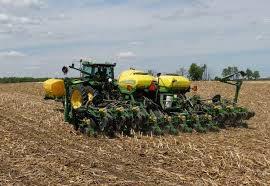
|
|
Crop Condition
(pending USDA reports)
|
V. Poor |
Poor
|
Fair
|
Good |
Excellent |
|
Corn 2024 (%)
|
|
|
|
|
|
| Corn 2023 (%) |
|
|
|
|
|
| |
|
|
|
|
|
|
Soybeans 2024 (%)
|
|
|
|
|
|
| Soybeans 2023 (%) |
|
|
|
|
|
|
 |
|
|
Parameter 48 States
|
V. Short |
Short
|
Adequate
|
Surplus |
| Topsoil Moisture: |
|
|
|
|
|
Past Week
|
4
|
14
|
64
|
18
|
| Past Year |
7 |
17 |
63 |
13 |
| Subsoil Moisture: |
|
|
|
|
|
Past Week
|
5
|
17
|
64
|
14
|
| Past Year |
11 |
21 |
59 |
9 |
| |
|
|
|
|
|
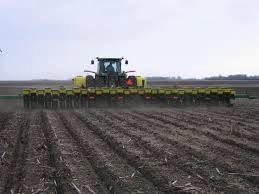 |
|
|
EGG-NEWS will report on the progress of the two major crops as monitored by the USDA through to the end of the 2024 harvest in November.

|
Federal Coordinated Framework for Regulating Biotechnology
|
05/13/2024 |
|
Based on legislation in 1986 and an updated 2017 Executive Order #14081, three federal agencies have established a memorandum of understanding relating to biotechnology. The Executive Order entitled “Advancing Biotechnology and Biomanufacturing Innovation for a Sustainable, Safe and Secure American Bioeconomy,” has brought together the resources of the U.S. Environmental Protection Agency, the U.S. Food and Drug Administration and the U.S. Department of Agriculture. The agencies are tasked with establishing a coordinated framework to address economic advancement through biotechnology. This will include modified plants, animals and microorganisms and the development of pharmaceuticals and biologics.
The agencies intend to “clarify and streamline regulatory oversight for GM plants, animals and microorganisms. The agencies will also share information and enhance inter-agency communication.

Given the history of delays in reviewing and approving GM modification for plants and animals, coordination and prompt evaluation of applications is obviously required. Unfortunately, the Executive Order attempts to generate progress through engendering cooperation among three different agencies with entrenched and diverse cultures. This will be analogous to herding cats. The FDA has no business in becoming involved with GM animals for food production although there is justification to regulate GM modification to produce biopharmaceuticals in milk and eggs. Neither the EPA nor FDA is competent to be an arbiter of aspects of food production.
It is generally conceded that other than the FSIS, the USDA with its farmer-oriented bias, cannot be relied on to protect public health by regulating food production. Attempting to establish cooperation and synergy among three essentially competitive agencies each defending their respective turf does not auger well for the intent of Executive Order #14081. An independent food safety and nutrition agency is required.

|
Dollar Stores Adversely Impact Rural Independent Groceries
|
05/13/2024 |
|

A cooperative study by the USDA Economic Research Service and economists affiliated to North Dakota State University and the University of Connecticut have recently published on the effect of dollar stores on independent groceries*. The study covered the years 2000 to 2019 and considered both urban and rural locations.
It was demonstrated that when a dollar store opened in an area, existing independent grocery retailers were 2.3 percent more likely to exit the market. Employment in these stores decreased by 3.7 percent and total sales by 5.7 percent on average. The impact was however more pronounced in rural areas. Following the establishment of a dollar store, independent groceries were 5.0 percent more likely to cease operation, and employment was reduced by 7.1 percent and sales by 9.2 percent. The negative effect in rural areas was approximately twice that of urban locations. The report noted  that independent groceries were generally unlikely to reestablish operations given the presence of dollar stores. that independent groceries were generally unlikely to reestablish operations given the presence of dollar stores.
Because dollar stores carry a limited range of foods compared to independent groceries, their introduction into rural areas may affect nutrition based on limitation of selection especially in items regarded as “healthy foods” including eggs, dairy and produce.
*Lopez, R. et al Dollar Store expansion and independent grocery retailer contraction, Applied Economic Perspectives and Policy (2023) doi.org/10.1002/aepp.13398

|
ADM Donates $1 Million to Kansas State University
|
05/13/2024 |
|

The Global Center for Grain and Food Innovation  at Kansas State University will receive $1 million in funding from ADM to support advances in food product development and food security. Dr. Ernie Minton, Dean of the College of Agriculture and Director of K-State Research and Extension noted, “The College of Agriculture is consistently ranked as one of the top 10 higher education ag programs in the nation and this donation will help ensure we remain at the top in educating students in research and helping our partners feed hungry world”. at Kansas State University will receive $1 million in funding from ADM to support advances in food product development and food security. Dr. Ernie Minton, Dean of the College of Agriculture and Director of K-State Research and Extension noted, “The College of Agriculture is consistently ranked as one of the top 10 higher education ag programs in the nation and this donation will help ensure we remain at the top in educating students in research and helping our partners feed hungry world”.

Tedd Kruse, President of ADM Milling stated, “We are excited to support the development of the Global Center for Grain and Food Innovation at Kansas State University. The facility will not only foster new collaborations across the university, but it will enhance the student experience by way of research, creativity and innovation”.

|
China Approves GM Wheat
|
05/13/2024 |
|
 To date, China has followed a policy of growing non-GM crops but importing genetically modified ingredients mostly for animal feed. To date, China has followed a policy of growing non-GM crops but importing genetically modified ingredients mostly for animal feed.
The intended approval of GM cultivars for domestic production is regarded as a major shift recognizing the inherit value of the technology. The GM wheat varieties will be used to produce pasta, noodles and bread.

The shift towards approval of GM crops is an acknowledgment that agriculture in China must become more efficient to reduce the Nation’s reliance on imports. Insect-resistant strains of corn are now undergoing approval along with appropriate changes in labeling regulations. The phase- shift should eventually result in general acceptance of GM crops in China and will influence acceptance by holdout nations.

|
FDA Proposes Final Rule on Irrigation Water for Produce
|
05/13/2024 |
|
 The FDA has issued a proposed Final Rule relating to agricultural water for green produce other than sprouts. The FDA has issued a proposed Final Rule relating to agricultural water for green produce other than sprouts.
The Rule specifically: -
- Establishes requirements for agricultural water assessment based on proximity to sources of contamination.
- Requires assay of pre-harvest water use for irrigation.
- Requires farms to implement “effective mitigation measures within specific time frames”.
- Provides options for mitigation with “additional flexibility in responding to findings from pre-harvest agricultural water assessments”.
Basically, the new rule dances around the reality that runoff from intensive livestock facilities contaminates water with a range of pathogens including E.coli O:157 and other STECs; Listeria; Salmonella and possibly pathogenic viruses.
It is axiomatic that a foodborne public health problem attributed to contamination  cannot be resolved by “testing”. Contamination of irrigation water is inevitable and accordingly FDA are attempting to regulate the wrong end of the production chain” Emphasis should be placed on a possible kill step that will destroy bacterial pathogens since green produce is consumed raw. cannot be resolved by “testing”. Contamination of irrigation water is inevitable and accordingly FDA are attempting to regulate the wrong end of the production chain” Emphasis should be placed on a possible kill step that will destroy bacterial pathogens since green produce is consumed raw.
The FDA is committed to an “educate before and while we regulate” approach that is essentially ameliorative and does little to provide absolute protection from contamination. At present, eating green produce is effectively “lettuce roulette”.
The FDA should get serious over contamination of produce and abandon the current pas de deux with producers of leafy greens, face reality and develop an effective and durable solution at the processing and packaging level.

|
Aldi Pressing Suppliers Over Cost
|
05/13/2024 |
|
 To maintain the image and reality of Aldi as a deep discounter offering low prices on private brands, the Company is “urging suppliers to drive down costs”. The secondary consideration is to enhance sustainability consistent with Aldi values. In return, Aldi is offering long-term supply contracts and collaboration on business development. To maintain the image and reality of Aldi as a deep discounter offering low prices on private brands, the Company is “urging suppliers to drive down costs”. The secondary consideration is to enhance sustainability consistent with Aldi values. In return, Aldi is offering long-term supply contracts and collaboration on business development.
The corporate policy of Aldi is exemplified in the comment by Scott Patton, Vice-president of National Buying who stated, “I can’t state the importance of reducing costs.” This is a logical and fundamental objective inherent to Aldi but should take into consideration the cost structure of many items including eggs for which feed represents over 60 percent of nest-run cost.

Aldi should be cognizant of the need for suppliers to generate an adequate margin to provide a return on investment and to allow for depreciation of equipment and facilities in the production of food items supplied to the company. Recent experience in the U.K. where chains nickeled and dimed free-range egg producers into negative returns resulted in a sharp reduction and availability as producers ceased production.
Generally, Aldi has a harmonious relationship with egg suppliers although the company wields a sharp pencil. If Aldi requires  producers to invest in sustainability including installation of solar panels or wind generation of power or other improvements to enhance welfare, then it must be prepared to provide a satisfactory return. If margins shrink in response to higher specifications without compensation, Aldi may be deprived of supplies. Eggs are an important component of the grocery basket, and supply cannot be compromised. producers to invest in sustainability including installation of solar panels or wind generation of power or other improvements to enhance welfare, then it must be prepared to provide a satisfactory return. If margins shrink in response to higher specifications without compensation, Aldi may be deprived of supplies. Eggs are an important component of the grocery basket, and supply cannot be compromised.

|
Hormel Foods Inaugurates Childcare Center
|
05/13/2024 |
|
On May 7th Hormel Foods Corporation opened the Inspired Beginnings Learning Academy for the children of company employees in Austin, MN. The center, extending over 13,000 square feet cost $5 million and will be operated by Bright Horizons, a major provider of employer-sponsored childcare.

Angie Bissen, HR Manager for Hormel Foods, stated, “We are always striving to ensure Austin, MN. and the surrounding areas are a prime destination for top talent.” She added, “One of the main insights gathered from our research and from other employers in the area is the critical importance of accessible childcare options.”
The programs to be presented at the Beginnings Learning Academy will provide children with the socialization and skills to compete and excel when they enter elementary school.

The need for childcare is clearly indicated by the cost of both private and commercial services. In many cases, it does not pay parents to both work given the costs associated with commuting and childcare for families with preschoolers. The example established by Hormel Foods and other employers should be more widely emulated.

|
Legal Action by Greenpeace Contributes to Blindness in the Philippines
|
05/13/2024 |
|
Following a lawsuit filed by Greenpeace, cultivation of Malusog Golden Rice will be banned. The GM variety incorporates genes from corn and bacteria that contribute to a high level of available vitamin A in a diet incorporating the GM cultivar.

The strain was developed at the Philippine Rice Research Institute using technology developed over two decades ago in Switzerland to provide adequate vitamin A to consumers with a low standard of nutrition. Vitamin A is required to maintain the integrity of mucous membranes to resist respiratory infections and to prevent blindness, especially in children.

The Court hearing the case was unable to reach a conclusion based on conflicting scientific and evidence presented by the two parties. The Government intends to appeal the decision that resulted from an apparent misinterpretation of the “precautionary principle”.
Greenpeace alleged that “GM crops have never been proven safe.” As a matter of record, GM corn, soybeans and beets for sugar have been widely cultivated and consumed without any evidence of any deleterious effect.
Golden Rice has been approved in Australia, New Zealand, Canada and the United States and is now cultivated in Bangladesh.
When established, Greenpeace provided valuable service to ecologists and environmentalists in advocating scientific principles of land and marine resources. In recent years, the organization has been hijacked by extremists and activists opposed to intensive livestock and crop production. As with similar organizations opposed to increased productivity, they offer no alternative to beneficial technology.

Golden Rice is promoted by a humanitarian Board that grants patent rights to institutions without payment of a royalty. There is no commercial benefit to any biotech enterprise from propagating the strain.
Those in Greenpeace should be ashamed of their dubious legal victory. There are thousands of impoverished children picking a livelihood on garbage dumps or working in fields whose vision will be impaired because they are denied access to a nutritious food staple.

|
Ovotrack Completes MPS Egg Farm Installation
|
05/12/2024 |
|
 During April, Ovotrack B.V. Completed installation of a comprehensive software system at the MPS Egg Farms plant in Loda, IL. The system harmonizes both Aeros and existing Ovotrack software. During April, Ovotrack B.V. Completed installation of a comprehensive software system at the MPS Egg Farms plant in Loda, IL. The system harmonizes both Aeros and existing Ovotrack software.
Mark Casper, GM of MPS Egg Farms stated, “We have now started the implementation of Ovotrack at Feather Crest in Texas and Country Charm in Georgia. He added, “Inventory control and digitalization of our process was our main goal when we started this project that will allow us to comply with FDA traceability rules”.
Adam Jones of MPS Egg Farms stated, “We have weekly Teams meetings with the Ovotrack project team where we discuss progress and address issues. We are actually up and running at all plants in Illinois and Indiana right now with real-time inventory control for packing material and finished goods incorporating scanning of pallets and generating printed packing lists that are provided through our Aeros installation”.
Recently Ovotrack received Microsoft Partner certification. This enables the Company to access current technology distributed within the Microsoft Partner network.

With increasing demand for Ovotrack installations, the company has strengthened the customer support team appointing specialists in both the Netherlands and the USA to update software for labels and reports. Ovotrack has the capability of taking over programs in real-time to effect changes and to provide assistance.
For further information access the Ovotrack website by clicking onto the company logo on the right side of the welcome page.

|
Elanco Animal Health Posts Q1 2024 Results
|
05/10/2024 |
|
 In a press release dated May 8th, Elanco Animal Health (ELAN) reported on Q1 FY 2024 ending March 31st. Elanco beat on EPS and on the top line by 2.2 percent against consensus estimates. For the period, the company posted net income of $32 million on revenue of $1,205 million with a diluted EPS of $0.06. For the corresponding Q1 FY2023, The Company earned $103 million on sales of $1,257 million with a diluted EPS of $0.21. Comparing Q1 2024 with Q1 202:- In a press release dated May 8th, Elanco Animal Health (ELAN) reported on Q1 FY 2024 ending March 31st. Elanco beat on EPS and on the top line by 2.2 percent against consensus estimates. For the period, the company posted net income of $32 million on revenue of $1,205 million with a diluted EPS of $0.06. For the corresponding Q1 FY2023, The Company earned $103 million on sales of $1,257 million with a diluted EPS of $0.21. Comparing Q1 2024 with Q1 202:-
- Revenue declined by 0.6 percent
- Gross margin declined from 60.7 to 57.3 percent
- Operating margin declined from 28.2 to 22.1 percent
During Q1 2024 sales to the livestock sector attained $556 million, representing 46.1 percent of total company sales. Sales to the poultry sector amounted to $197 million representing 16.3 percent of Company sales. Sales of companion animal products attained $639 million or 53.0 percent of the Company total.
The Company recently announced the divestment of their aquaculture business with quarterly sales of $31 million to Merck Animal Health for $1,300 million in cash.
Guidance for FY 20234 included revenue of $4,460 to $4,519 million but with a net loss ranging from $(3) to $(45) EPS will range from a negative $(0.88) to $(0.96).
In commenting on results, Jeff Simmons, CEO stated, “Elanco's strong business momentum continued in the first quarter, reinforced by the diversity of our portfolio and balanced geographic presence. We delivered estimated revenue growth of 3% to 5% in the first quarter, excluding the impact of the ERP blackout from last year, and exceeded the topend of our guidance range for revenue, adjusted EBITDA and adjusted EPS in the quarter. These results follow the 5% revenue growth we delivered in the last two quarters of 2023. We are increasing our new product sales expectations, led by
Experior® and AdTab®, and our innovation is enhancing the durability of our base portfolio with customers, allowing us to raise our full year constant currency revenue growth range to 2% to 3%." He added, "Additionally, we improved operating cash flow by nearly $150 million year over year in the first quarter as a result of our disciplined focus on improving net working capital and the benefit of completing our ERP system integration."

Simmons continued, "We are encouraged by the strong progress of our late-stage pipeline, which has advanced significantly over the last several months. Based on our dialogue with the FDA and the status of packages submitted, we have increased certainty in the expected approval timing for Bovaer®, Zenrelia™ and Credelio Quattro™. We continue to expect to bring differentiated products to the market, with revenue contribution expected from all three new products in the second half of 2024."
This self-adulatory statement is at variance with the reality of continued losses, shareholder disaffection and loss of technical and marketing talent.
Ancora an investment group with three percent of the equity proposed a slate of independent candidates to be added to the 12-person Board to replace four retiring members. Ancora characterized the current Board and CEO as “barriers to success”.
On December 31st ELAN posted total assets of $14,019 million including goodwill and intangibles of $8,674 million with long-term debt of $6,201 million. On May9th the market capitalization attained $8,350 million The Company has traded over the past 52-weeks in a range of $7.88 to $17.38 with a 50-day moving average of $14.97.
On a twelve-month trailing basis, operating margin was 1.6 percent and profit margin -27.9 percent. The company achieved a return on assets of 1.4 percent and -18.2 percent on equity.
After meeting with Ancora and following release of FY 2023 earnings, Elanco announced a program to enhance shareholder value. This included a shift from livestock to higher-margin companion animal products, cancellation of 420 positions with layoffs and changes in representation and distribution to reduce costs. At the insistence of Ancora, Kathy Turner a veteran of IDEX and Craig Wallace were added to the Board.

|
Dairy Industry Discovering the Need for PPE
|
05/09/2024 |
|
The U.S. Centers for Disease Control and Prevention is cooperating with state health agencies with regard to availability, distribution and use of personal protective equipment (PPE) for dairy farm workers. State health agencies accumulated an inventory of PPE during the COVID years. The CDC considers it appropriate that dairy farm workers and those in packing plants should be protected.

The fact that H5N1 avian influenza virus has been circulating in the dairy industry since late December and that only one mild case of conjunctivitis in a worker has been diagnosed, suggests that currently the risk of transmission to humans is low. This of course may change with possible additional mutations. The emergence of a zoonotic strain of H5N1 through the dairy industry seems remote. This is deduced from the history of highly pathogenic avian influenza in large egg-production complexes. Despite thousands of person-hours of exposure of workers involved in depopulation and decontamination apparently only one case was recorded over three years and this was without evidence of human-to-human transmission. Notwithstanding the current situation there is a risk of emergence of a zoonotic strain as noted by the World Health Organization that urges constant surveillance and sequencing of mammalian isolates.
|

 |

|
Disruption of Shipping in Red Sea Continues
|
05/09/2024 |
|
 To date 23 shipping companies representing both E.U. and Asian nations have suspended passage through the Suez Canal and the Red Sea due to the action of Houthi militants in Yemen that continue attacks on vessels in international waters transiting the Bab el Mandeb Strait. To date 23 shipping companies representing both E.U. and Asian nations have suspended passage through the Suez Canal and the Red Sea due to the action of Houthi militants in Yemen that continue attacks on vessels in international waters transiting the Bab el Mandeb Strait.
As an alternative, E.U. shipping companies in France, Switzerland, Germany, Denmark, Norway and in Asia including Taiwan, Japan and South Korea are diverting vessels around  the Cape of Good Hope. This adds as much as 14 days and $1 million in operating cost per Panamax-sized shipment between Asia and the E.U. Military action by the U.S. in cooperation with other NATO countries has apparently not resolved the problem of missiles and ordinance fired from mobile launches in eastern Yemen. With passage through the Suez Canal down by half, Egypt is loosing considerable revenue that supports the fragile economy. the Cape of Good Hope. This adds as much as 14 days and $1 million in operating cost per Panamax-sized shipment between Asia and the E.U. Military action by the U.S. in cooperation with other NATO countries has apparently not resolved the problem of missiles and ordinance fired from mobile launches in eastern Yemen. With passage through the Suez Canal down by half, Egypt is loosing considerable revenue that supports the fragile economy.

|
Costco Reports on April 2024 Sales
|
05/09/2024 |
|
 On May 8th Costco Wholesale Corporation (COST) reported sales for April 2024. For the period, sales attained $1,980 million up 7.1 percent from the value of $1,848 million during the corresponding month in 2023. On May 8th Costco Wholesale Corporation (COST) reported sales for April 2024. For the period, sales attained $1,980 million up 7.1 percent from the value of $1,848 million during the corresponding month in 2023.
Same store sales (excluding fuel and foreign exchange) increased 5.2 percent for the U.S.; 5.9 percent for Canada and 7.0 percent for international warehouses. Overall, same-stores sales advanced by 5.5 percent and E-commerce was 14.8 percent higher.
 Costco Wholesale Corporation operates 876 warehouses with 604 in the U.S.; Canada, 108; Mexico, 33 and the remainder in nine other nations. Costco Wholesale Corporation operates 876 warehouses with 604 in the U.S.; Canada, 108; Mexico, 33 and the remainder in nine other nations.
Costco closed on May 8th before release of the data at $763.41, but was up on May 9th post- release at 10H30 to $772.90 with a market capitalization of $338,580 million. COST has traded over a 52-week range of $476.75 to $787.08 with a 50-day moving average of $731.83.

|
Micro-Tracers Completes Phase II of Wastewater Treatment Study
|
05/08/2024 |
|
During February 2023, Micro-Tracers, Inc. in collaboration with University of Arkansas, was awarded a USDA National Institute of Food and Agriculture (NIFA), Small Business Innovation Research (SBIR) grant as part of the Meat and Poultry Processing Research and Innovation (MPPRI) program. This program aims to improve the supply chain resilience of small and mid-size meat and poultry processors through emerging technologies, sustainability and food safety.

The collaborative project focuses on a chlorine-free method that safely and cost- effectively inactivates pathogens in poultry wastewater. Generating these disinfectants on-site, in wastewater reduces hazards associated with handling of chemicals and contributes to worker safety. This application also reconditions wastewater without toxic residues, making it environmentally friendly and ideal for water reuse applications while providing real-time process monitoring to ensure the safety of poultry products.

In 2023, pilot-scale equipment was designed and built and utility was validated. Both E.coli and Salmonella were inactivated in treated wastewater through the in-situ generation of oxidants. These included hydrogen peroxide, hydroxyl radicals and singlet oxygen. Quantitative analyses of bacterial survival showed decreases in colony forming units by two to four orders of magnitude.
The principle of the application is the generation of reactive oxygen species (ROS) that induce oxidative stress leading to bacterial death.When molecular oxygen undergoes electrochemical reduction, the resulting molecules and metallic ions further reduce pro-oxidants to form highly-reactive hydroxyl radicals through the Fenton reaction. Simultaneous photodynamic reactions generate another ROS, singlet oxygen contributing to bacteriolysis.
Continuation of Phase III research in 2024 will focus on commercialization and integration of pilot equipment into existing poultry processing, sanitation and cleaning systems. Remote trials are in progress at the Agricultural Research and Extension Pilot Processing Plant of the University of Arkansas, Poultry Science Department in addition to the Natural State Processing Facility in Clinton, AR.
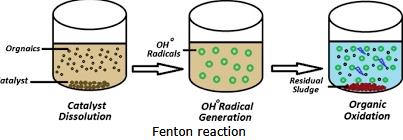
Micro-Tracers, Inc. established in 1961 has acquired extensive experience collaborating with senior technical staff at poultry integrations in the U.S. and abroad. By adopting improved water reuse applications, small to mid-sized poultry producers can improve sustainability, supply chain resiliency and generate enhanced profitability.

|
Egg Month
|
05/08/2024 |
|
REVIEW OF APRIL 2024 EGG PRODUCTION COSTS AND STATISTICS.
Commencing in January 2024 the EIC justifiably separated the production costs and unit revenue values for eggs derived from caged and cage-free flocks. Accordingly, EGG-NEWS will continue to summarize data but will consolidate production and export statistics for the U.S. egg industry as a total and compare financial data for the two shell-egg categories.
APRIL HIGHLIGHTS
- April 2024 USDA ex-farm blended USDA nest-run, benchmark price for conventional eggs from caged hens was 190 cents per dozen, up 3 cents per dozen or 1.6 percent from the March 2024 value of 187 cents per dozen. For comparison, average monthly USDA benchmark price over 2023 was 146.0 cents per dozen with a range of 323 cents per dozen in January down to a low of 57 cents in May. Stock levels and prices prior to the onset of flock depletions due to HPAI indicated a relative seasonal balance between supply and demand. Future nest-run and wholesale prices will be largely dependent on consumer demand for shell eggs and products and the rate of replacement of pullets and hens depleted due to HPAI. Other considerations include diversion to shell sales from the egg-breaking sector in an interconnected industry.
- Fluctuation in wholesale price is attributed in part to the amplification of upward and downward swings associated with the commercial benchmark price discovery system in use. A substantial but transitory rise in price occurred during February but with a sharp decline thereafter to a mid-March plateau, extending into late April. A 30 percent decline occurred over the past two weeks into May. An unknown factor in future pricing will be the incidence rate and severity of highly pathogenic avian influenza over late spring months with northward migration of waterfowl. Close to 13 million hens and 2.5 million pullets were depopulated during the fourth quarter of 2023 among five states with heavy losses in California. Approximately 8.4 million hens were depleted in two outbreaks (TX and MI) through mid-April.
- April 2024 USDA average nest-run production cost for conventional eggs from caged flocks over four regions (excluding SW and West), applying updated inputs was up 0.3 cents per dozen to 75.6 cents per dozen compared to the March 2024 value of 75.3 cents per dozen, mainly attributable to a 0.6 percent higher average feed cost per dozen. Approximately 60 cents per dozen should be added to the USDA benchmark nest-run cost to cover processing, packing material and transport to establish a realistic price as delivered to warehouses.
- April 2024 USDA benchmark nest-run margin for conventional eggs attained a positive value of 114.4 cents per dozen compared to a positive margin of 111.7 cents per dozen for February 2024. Average nest-run monthly margin over 2023 was 64.2 cents per dozen compared to 155 cents per dozen in 2022. This differential was mainly due to higher prices following HPAI-depletion of flocks. It is emphasized that the U.S. benchmark price reflects nest-run conventional eggs.
- The April 2024 national flock in production (over 30,000 hens per farm) was stated by the USDA to be down 0.1 million hens (rounded) to 297.1 compared to the revised March 2024 value of 295.5 million. This figure apparently takes into account depletion of 4.2million hens during December 2023 that were not recorded in the month. Approximately 3.0 million hens returned to production from molt in April together with projected maturation of 23.1 million pullets, with this number offset by depletion of spent flocks. During the fourth quarter of 2023 approximately 13 million hens and 2.5 million pullets were depopulated due to HPAI in five states and 8.4 million were depopulated in April
- March 2024 pullet chick hatch of 28.3 million was up 2.9 percent or 0.8 million chicks from February 2024.
- March 2024 exports of shell eggs and products combined was down 3.3 percent from February 2024 to 620,400 case equivalents representing the theoretical production of 8.2 million hens. The increase was attributed to greater demand for shell eggs by Canada and offset by reduced imports of egg products by Japan, South Korea and the E.U. among other importing countries.
TABLES SHOWING KEY PARAMETERS FOR APRIL 2024.
Summary tables for the latest USDA April 2024 flock statistics, costs and unit prices made available by the EIC on May 7th 2024 are arranged, summarized, tabulated and compared with values from the previous April 8th 2024 posting reflecting March 2024 costs and production data as applicable. Monthly comparisons of production data and costs are based on revised USDA value
VOLUMES OF PRODUCTION REFLECTING THE ENTIRE INDUSTRY
|
PARAMETER
|
MARCH 2024
|
APRIL 2024
|
|
Table-strain eggs in incubators
|
56.4 million (Mar.)*
|
55.9 million (Apr.)
|
|
Pullet chicks hatched
|
27.5 million (Feb.)*
|
28.3 million (Mar)
|
|
Pullets to be housed 5 months after hatch
|
26.4 million (July)*
|
25.4 million (Aug.)
|
|
EIC 2023 December 1st U.S. total flock projection
|
328.9 (Mar.)
|
329.6 million (Apr.)
|
|
National Flock in farms over 30,000
|
295.5million (Feb.)*
|
297.1 million (Mar.)
|
|
National egg-producing flock
|
311.2 million (Feb.)*
|
312.9 million (Mar.)
|
|
Cage-free flock excluding organic
|
106.5 million (Mar.)
|
99.2 million (Apr.)
|
|
Proportion of flocks in molt or post-molt
|
11.2% (Mar.)
|
10.9% (Apr.)
|
|
Total of hens in National flock, 1st cycle (estimate)
|
275.6 million (Feb.)
|
278.8 million (Mar.)
|
* USDA Revised
|
Total U.S. Eggs produced (billion)
|
7.41* February 2024
|
7.99 MARCH 2024
|
|
Total Cage-Free hens in production
|
124.8 million (Mar.)
14.7% Organic
|
116.0 million (Apr.)
14.4% Organic
|
|
“Top-5” States hen population (USDA)1
|
145.0 million (Feb.)
|
146.7 million (Mar.)
|
* Revised USDA/EIC
Note 1. Texas excluded to maintain confidentiality
 
|
Egg Week
|
05/08/2024 |
|
USDA Weekly Egg Price and Inventory Report, May 8th 2024.
Market Overview
 |
- The average wholesale unit revenue values for Midwest Extra-large and Large sizes were down 22.7 percent this past week. Medium size was down 23.8 percent. National wholesale price for large in cartons at $2.11 per dozen was approximately $0.60 per dozen above the 3-year average of $1.50 per dozen and up $1.25 from the corresponding week in 2023 at $0.90 per dozen. This past week shell egg inventory was up by 2.7 percent, compared to a rise of 0.8 percent in stock the previous week.
- Although there has been a weekly increase in pullet flocks transferred to laying houses, hen numbers are constrained by the loss of close to 13 million hens due to HPAI on twelve complexes holding from 250,000 to 2.6 million hens during the 4th Quarter of 2023. Losses have not yet been completely replaced. Pullets are in short supply with losses of 2.5 million growing birds, mainly in California. During April close to 8.4 million hens collectively were depopulated in a sequence comprising one complex in Texas and three related facilities under common ownership in Michigan in addition to a breeder complex in New Mexico.
- This past week chains apparently widened the spread between delivered cost and shelf price. This could result in a continued rise in generic stock offset only by a proportional rise in demand that appears unlikely and only with constant re-ordering to fill the pipeline through May. Discounters are holding prices on generics influencing mainstream retail stores. Eggs are still highly competitive in price against the comparable costs for other protein foods.
- Total industry inventory was up by 3.0 percent overall this past week to 1.74 million cases with a concurrent 4.5 percent increase in breaking stock, following an 11.5 percent increase during the preceding processing week. Demand for egg products has fallen into May attributed to less home-baking and entertaining. Egg products are required for the food service and manufacturing sectors and for exports that increased in February.
- It is now apparent that the inventory held by chains and other significant distributors may be more important over the short term in establishing wholesale price compared to the USDA regional inventory figures. Changes in stock held by DCs and in the pipeline as determined by weekly orders are probably responsible for small cyclic fluctuation in weekly industry stock, especially into and after a holiday weekend.
- The number and extent of future possible outbreaks during the spring and fall months of 2024 cannot be projected but sporadic cases in backyard poultry, isolation from wild migratory and predatory birds and close to 40 dairy herds in nine widely diverse states is a cause for concern. More surveillance information should be released by USDA-APHIS as it becomes available concerning the prevalence rate of carriers among resident domestic free-living birds and a review of molecular and field epidemiology for the 2022 spring and fall waves of HPAI. The USDA has yet to identify and release specific modes of transmission for the 2022-2023 epornitic including likely airborne spread from wild birds and their excreta over short distances.
- The current relationship between producers and chain buyers based on a single commercial price discovery system constitutes an impediment to a free market. The benchmark price appears to amplify both downward and upward swings as evidenced over the past two years. A CME quotation based on Midwest Large, reflecting demand relative to supply would be more equitable. If feed cost is determined by CME ingredient prices then generic shell eggs should be subject to a Midwest Large quotation.
- According to the USDA the U.S. flock in production was apparently down by 0.4 million hens (0.1 percent) to a new level of 306.2 million for the week ending May 8th The stated total flock of 311.5 million included about one million molted hens that will resume lay during coming weeks plus 4.5 to 5.0 million pullets scheduled to attain production. Given the latest figures it is estimated that the producing flock is at least 17 to 20 million hens lower than before the onset of HPAI in 2022. In January 2024 the USDA adjusted figures to account for depopulation of 13 million hens spread over the last quarter of 2023. There were evident discrepancies between published figures and the theoretical number of hens over successive weeks taking into account known losses and predetermined pullet replacements. The April loss of 8.4 million hens is not reflected in data released over the past five weeks. It is hoped that the USDA agency responsible for publication of flock size will get their act together and coordinate with APHIS to record the number of depleted flocks and promptly provide accurate data. Figures released on May 8th overestimate flock size
- The ex-farm price for breaking stock (rounded to one cent) was down 15.7 percent to $1.13 per dozen.Checks delivered to Midwest plants were down 10.3 percent to $1.05 per dozen this past week. Prices for breaking stock should follow the wholesale price for shell eggs usually with a lag of about one to two weeks.
The Week in Review
Prices
According to the USDA Egg Market News Reports released on May 6th 2024, the Midwest wholesale price (rounded to one cent) for Extra-large was down 22.7 percent from last week to $1.58 per dozen. Large was down 22.8 percent to $1.56 per dozen. Mediums were down 23.8 percent to $1.46 per dozen delivered to DCs. Prices should be compared to the USDA benchmark average 4-Region blended nest-run cost of 75.6 cents per dozen as determined by the Egg Industry Center based on USDA data for April 2024. This value excludes provisions for packing, packaging materials and transport, amounting to 57 cents per dozen as determined in mid-2023 from an EIC survey (with a low response) and now realistically 60 cents per dozen.
 
|
Walmart Withdrawing from Health Clinics
|
05/07/2024 |
|
 After a five-year period of operation, Walmart has decided to close all 51 of their health clinics and to discontinue telehealth services. The company noted that the business was unprofitable mainly due to difficulty in obtaining reimbursement. The decision will impact 40 health centers in Florida and Georgia and the remainder among four southern states. After a five-year period of operation, Walmart has decided to close all 51 of their health clinics and to discontinue telehealth services. The company noted that the business was unprofitable mainly due to difficulty in obtaining reimbursement. The decision will impact 40 health centers in Florida and Georgia and the remainder among four southern states.

Walmart health centers were established in 2019 in selected Supercenters offering medical and dental services and urgent care at competitive prices. Experience gained over the five-year period will be applied to 4,600 pharmacies and 3,000 vision centers. Walmart intends to continue with immunizations and diagnostic services including health screenings.
The action by Walmart follows the decision by Walgreen’s to close 160 Village-MD primary care clinics resulting in a $5.8 billion impairment charge.

|
Dr. Katelyn Jetelina Named aTIME100 Most Influential Person in Health
|
05/07/2024 |
|
 Katelyn Jetelina, PhD., MPH, Editor and distributor of the YLE (Your Local Epidemiologist) Newsletter has been named one of the TIME100 Most Influential People in Health for 2024. In a statement recognizing the distinction, Dr. Jetelina noted, “It is with overwhelming gratitude, a little embarrassment and incredible excitement to share that YLE made it into the TIME100 Most Influential People in Health.” She noted that, “For the past few years, I have felt like I am going through the jungle with a machete to carve out a new path that I believe so deeply needs to be paved: One that empowers people to make evidence-based health decisions by bringing them on the scientific discovery ride.” Katelyn Jetelina, PhD., MPH, Editor and distributor of the YLE (Your Local Epidemiologist) Newsletter has been named one of the TIME100 Most Influential People in Health for 2024. In a statement recognizing the distinction, Dr. Jetelina noted, “It is with overwhelming gratitude, a little embarrassment and incredible excitement to share that YLE made it into the TIME100 Most Influential People in Health.” She noted that, “For the past few years, I have felt like I am going through the jungle with a machete to carve out a new path that I believe so deeply needs to be paved: One that empowers people to make evidence-based health decisions by bringing them on the scientific discovery ride.”
 The newsletter originated as an E-mail to faculty and students four years ago. It now has over 400 million views in 133 nations. The newsletter originated as an E-mail to faculty and students four years ago. It now has over 400 million views in 133 nations.
Dr. Jetelina is a leader in translating scientific discovery and epidemiologic realities for professional and public understanding. She was instrumental in dispelling many myths and misperceptions during the COVID years. Above all, her logic and ability to communicate bridge the gulf between laboratories and everyday life.
A keen advocate for immunization, the YLE newsletter has positively influenced decision makers and politicians saving lives and reducing the impact of communicable diseases. EGG-NEWS frequently quotes from the YLE Newsletter since it is an authoritative and reliable source of information. Subscription to her newsletter is strongly endorsed especially for those in our industry that must communicate complicated concepts relating to communicable and foodborne diseases and their prevention to customers and the media.

|
Subway Now Under New Ownership
|
05/07/2024 |
|
 Subway is now under the ownership of Roark Capital, a private equity firm based in Atlanta. The Subway chain comprises 37,000 restaurants in 100 nations, all owned and operated by franchisees. Subway stores specialize in made-to-order sandwiches, wraps, salads and bowls. Subway is now under the ownership of Roark Capital, a private equity firm based in Atlanta. The Subway chain comprises 37,000 restaurants in 100 nations, all owned and operated by franchisees. Subway stores specialize in made-to-order sandwiches, wraps, salads and bowls.
The acquisition of Subway followed an intensive program of menu innovation and promotion. John Chidsey, CEO of Subway, stated, “The entire Subway system is excited that our sale to Roark is complete. He added, “As we look to our future, our growth journey is far from over. With a continued strategic focus on delivering better food and a better guest experiences, our next chapter will be the most exciting yet.” future, our growth journey is far from over. With a continued strategic focus on delivering better food and a better guest experiences, our next chapter will be the most exciting yet.”
Roark Capital has more than $38 billion in equity under management, specializing in franchise and multi-location businesses in the restaurant and consumer sectors.

|
Singapore Food Exhibition a Success for USAPEEC
|
05/07/2024 |
|

USAPEEC was the coordinator for ten members to exhibit at the 2024 Food and Hotel Asia-Food and Beverage Exhibition held recently in Singapore. The event was attended by 60,000 and featured 70 international pavilions from 50 nations. Visitors to the USAPEEC pavilion were provided with information and contacts for U.S. poultry and eggs and were able to sample poultry and egg dishes. The exhibition was attended by Ambassador Jonathan E. Kaplan, Agricultural Counselor Timothy Harrison and Agricultural Attache Karen Richards of the Malaysia-Singapore FAS/USDA office. (below)
The Singapore event was yet another of the series of promotional activities conducted by USAPEEC, benefiting producers and exporters in the U.S.

|


|

|
Sam’s Club to Deploy Advanced Store-Exit Technology
|
05/07/2024 |
|
 Sam’s Club will eliminate waiting in line at exits while employees reconcile receipts with purchases in baskets. Computer vision technology has been deployed in an extensive trial in 120 Clubs since January. Sam’s Club will eliminate waiting in line at exits while employees reconcile receipts with purchases in baskets. Computer vision technology has been deployed in an extensive trial in 120 Clubs since January.
After payment at a register or using Scan & Go, customers proceed to an exit where a combination of computer vision and AI verifies payment for all items.
Todd Garner, Chief Product Officer for Sam’s Club, stated, “Both exit technology and Scan & Go are driving new levels of convenience and raising member satisfaction.” He added, “We are able to seamlessly deploy technology at scale across 600 Clubs nationwide, revolutionizing the checkout experience.”

It remains to be seen whether competitors Costco and BJs introduce similar technology. From personal experiences, this commentator has never encountered a delay of more than 30 seconds in exiting a Costco Club usually burdened with dozens of items of various cost and size. Is Walmart deploying the technology because it is available, as a deterrent to theft or do they have a real problem of shrinkage or alternatively under-scanning of purchases at check-out stations, or all of the above? Time spent by customers waiting in line is probably the least important among motivations.

|
Colorado Bill to Legalize Raw Milk Deferred
|
05/07/2024 |
|
 Colorado Bill SB24-043 that would have legalized sale of raw milk in the state has apparently fallen victim to the legislative calendar and the emergence of bovine influenza-H5N1. The Bill will not be considered during the current legislative session although it will be reintroduced in 2025. Prospects for passage dimmed when the Bill was incorporated into a separate measure dealing with water resources and agriculture. The Colorado Raw Milk Bill, or “Freedom to be Infected” Bill although enthusiastically sponsored in both chambers, received only one hearing. Colorado Bill SB24-043 that would have legalized sale of raw milk in the state has apparently fallen victim to the legislative calendar and the emergence of bovine influenza-H5N1. The Bill will not be considered during the current legislative session although it will be reintroduced in 2025. Prospects for passage dimmed when the Bill was incorporated into a separate measure dealing with water resources and agriculture. The Colorado Raw Milk Bill, or “Freedom to be Infected” Bill although enthusiastically sponsored in both chambers, received only one hearing.

According to statements by USDA and FDA, irrespective of the H5N1 status of herds, pasteurization will effectively destroy influenza virus in milk. Recent surveys have detected viral RNA in commercial milk applying PCR assay but the product was non-infectious. Pasteurization effectively destroys the viability and infectivity of the virus. Fear of contracting infection from raw milk should lead raw milk advocates to boil their supplies before consumption thereby obviating the justification for purchase in the first place. It is simply safer, cheaper and more convenient to purchase commercial milk that is pasteurized resulting in freedom from bacterial and viral pathogens. There is no scientifically justifiable advantage from consuming raw milk compared to pasteurized milk but with all the risks of acquiring multiple infections. Unfortunately what was an entrenched quaint preference limited to a few misinformed consumers, has recently been politicized as a “freedom” issue.

|
Arizona Department of Agriculture Cage-Free Rules Challenged
|
05/07/2024 |
|
 Grant Krueger, owner of the Union Hospitality Group, comprising three restaurants, has legally challenged the rule issued by the Arizona Department of Agriculture mandating cage density and cage-free housing. Grant Krueger, owner of the Union Hospitality Group, comprising three restaurants, has legally challenged the rule issued by the Arizona Department of Agriculture mandating cage density and cage-free housing.
The Plaintiff stated that his Union Hospitality Group purchases close to 600 cases of eggs each year with an anticipated increase in cost in the region of $4,000 following the transition from conventional cages to alternative systems. In effect a nominal increase of 70 cents per dozen over his claimed volume would amount to $12,600 annually compared to cage-derived eggs
The Department of Agriculture as Defendants maintain that the Plaintiff alleges hypothetical future harm, and lacks standing. The regulation applies only to egg producers who may or may not increase the price of eggs to either food service or retail customers.
 To understand the substance of the case, some history is instructive. In 2021, World Animal Protection indicated that it would mount a voter initiative in Arizona similar to California Proposition #2 and #12 to ban conventional cages. The largest egg producer in the state at the time motivated legislation that would take effect in 2025. Despite the considerable lobbying clout of the egg producer the legislative initiative floundered. This resulted from concerted opposition by the Arizona Farm Bureau Federation. The Department of Agriculture, recognizing the inevitability of a ballot initiative, introduced a rule that would have achieved the same objective as a law and accordingly promulgated housing standards. To understand the substance of the case, some history is instructive. In 2021, World Animal Protection indicated that it would mount a voter initiative in Arizona similar to California Proposition #2 and #12 to ban conventional cages. The largest egg producer in the state at the time motivated legislation that would take effect in 2025. Despite the considerable lobbying clout of the egg producer the legislative initiative floundered. This resulted from concerted opposition by the Arizona Farm Bureau Federation. The Department of Agriculture, recognizing the inevitability of a ballot initiative, introduced a rule that would have achieved the same objective as a law and accordingly promulgated housing standards.
In pleadings before the Maricopa County Superior Court, Assistant Attorney General Joshua Whitaker maintained that the rules issued by the Department of Agriculture are within the authority of the Agency. According to Whitaker, the Legislature has authorized the Agency and Director, “To adopt rules for poultry husbandry in the production of eggs sold in the state.” This apparently is the legal justification for the Agency to establish and issue standards conforming to other states.
The lawsuit does not address questions of welfare as a justification for changes but the case addresses the legality of the rules issued by the Arizona Department of Agriculture.

|
Phibro Animal Health Corp. Acquires Medicated Feed Additive Portfolio from Zoetis Inc.
|
05/07/2024 |
|
 The transaction by which Phibro Animal Health acquired the Zoetis portfolio of feed additives is valued at $350 million. It is anticipated that the deal will be completed during the second half of 2024. The acquisition includes 37 product lines marketed in 80 countries together with six manufacturing locations, four in the U.S., and one each in Italy and China. Three hundred employees are expected to transition from Zoetis to Phibro. The transaction will increase annual sales by Phibro Animal Health to over $1.4 billion. The transaction by which Phibro Animal Health acquired the Zoetis portfolio of feed additives is valued at $350 million. It is anticipated that the deal will be completed during the second half of 2024. The acquisition includes 37 product lines marketed in 80 countries together with six manufacturing locations, four in the U.S., and one each in Italy and China. Three hundred employees are expected to transition from Zoetis to Phibro. The transaction will increase annual sales by Phibro Animal Health to over $1.4 billion.
 Jack C. Bendheim, Chairman and CEO of Phibro Animal Health stated, “This investment will enhance, diversify and broaden our portfolio globally and help us to deliver value to our customers and to our shareholders.” He added, “We believe our cash generation will allow for continued investment into our higher growth businesses of nutritional specialties, companion animals and vaccines.” It is anticipated that Zoetis and Phibro Animal Health will cooperate to achieve a smooth transition and continued supply of products. Jack C. Bendheim, Chairman and CEO of Phibro Animal Health stated, “This investment will enhance, diversify and broaden our portfolio globally and help us to deliver value to our customers and to our shareholders.” He added, “We believe our cash generation will allow for continued investment into our higher growth businesses of nutritional specialties, companion animals and vaccines.” It is anticipated that Zoetis and Phibro Animal Health will cooperate to achieve a smooth transition and continued supply of products.

|
JBS Defending Lawsuit In Iowa
|
05/07/2024 |
|
 At the request of JBS the Defendant, a lawsuit has been transferred from the Iowa District Court for Wapello County to a federal court in Iowa. According to a report in the Des Moines Register, the Plaintiff claims that she was unjustifiably terminated due to absences from the workplace due to the need for medical visits associated with an at-risk pregnancy. The Plaintiff also alleged that the company failed to provide suitable facilities to collect mother’s milk. It is alleged that JBS-USA violated both the Family Medical Leave Act and the Fair Labor Standards Act. The Plaintiff is claiming “fair compensation for injuries, emotional distress, lost wages, equitable relief and attorney’s fees as allowed by law. At the request of JBS the Defendant, a lawsuit has been transferred from the Iowa District Court for Wapello County to a federal court in Iowa. According to a report in the Des Moines Register, the Plaintiff claims that she was unjustifiably terminated due to absences from the workplace due to the need for medical visits associated with an at-risk pregnancy. The Plaintiff also alleged that the company failed to provide suitable facilities to collect mother’s milk. It is alleged that JBS-USA violated both the Family Medical Leave Act and the Fair Labor Standards Act. The Plaintiff is claiming “fair compensation for injuries, emotional distress, lost wages, equitable relief and attorney’s fees as allowed by law.
This case has very poor optics and should have been settled long since. Even under Federal rules of evidence any jury especially with a proportion of women will be inclined to identify with the Plaintiff. Irrespective of the outcome, JBS and other employers should review their policies relating to pregnant workers and comply with relevant legislation as a matter of good business practice in addition to worker welfare and customer relations.
|


|

|
Port Strike in Argentine to Reduce Exports
|
05/07/2024 |
|
 Radical economic reform measures introduced by President Javier Milei resulted in protest strikes effectively terminating export operations among terminals of the Ports of Rosario. The two unions involved included both soybean crushing plants and marine activities. At issue is a provision to lower the salary level exempted from income tax together with other labor reforms recently approved by the Lower House of the Argentine legislature. Radical economic reform measures introduced by President Javier Milei resulted in protest strikes effectively terminating export operations among terminals of the Ports of Rosario. The two unions involved included both soybean crushing plants and marine activities. At issue is a provision to lower the salary level exempted from income tax together with other labor reforms recently approved by the Lower House of the Argentine legislature.
 The austerity program introduced by President Milei, an economist has the support of the population that has suffered from hyperinflation induced by the corruption, profligate spending and socialistic policies of previous Peronista administrations. As of the being of May, the Ports of Rosario are nonfunctional according to the Chamber of Grain Exporters and Processors. The union representing workers in oilseed processing will await the result of votes in the Argentine Congress before deciding on either termination or prolongation of the strike. The austerity program introduced by President Milei, an economist has the support of the population that has suffered from hyperinflation induced by the corruption, profligate spending and socialistic policies of previous Peronista administrations. As of the being of May, the Ports of Rosario are nonfunctional according to the Chamber of Grain Exporters and Processors. The union representing workers in oilseed processing will await the result of votes in the Argentine Congress before deciding on either termination or prolongation of the strike.
Strikes among workers at crushing plants and related maritime activities could seriously impact exports and raise prices for soybean meal and corn on international markets with an indirect effect on U.S. producers.

|
Penn State Apprenticeship Program
|
05/06/2024 |
|
 Pennsylvania State University has initiated an apprenticeship program to provide training for students entering livestock production. The program will be managed by Penn State Extension and will provide 2,000 hours of on-the-job training extending over a year. Employers will hire apprentices and provide wages and benefits during training. Pennsylvania State University has initiated an apprenticeship program to provide training for students entering livestock production. The program will be managed by Penn State Extension and will provide 2,000 hours of on-the-job training extending over a year. Employers will hire apprentices and provide wages and benefits during training.
 Courses will include basic instruction on the care and management of domestic animals and specific classes on biosecurity, welfare and feeding for selected tracks covering dairy, swine or poultry. Instruction will also be provided on communication, time management, and related areas. The program will commence in mid-June with initial courses in animal care and general skills. Courses will include basic instruction on the care and management of domestic animals and specific classes on biosecurity, welfare and feeding for selected tracks covering dairy, swine or poultry. Instruction will also be provided on communication, time management, and related areas. The program will commence in mid-June with initial courses in animal care and general skills.
The Penn State program, should be emulated by other Land-Grant universities with appropriate adaptations for regional needs. It would be interesting to determine whether USDA funding is available for training given the prodigious volume of grants extended to support various initiatives during the current Administration.

|
Innovation and New Products Contest
|
05/06/2024 |
|
 The USAPEEC, using funding provided by the Kansas Soybean Commission sponsored an innovation and development of new products contest on April 15th at the Universidad Nacional Autónoma de Nuevo León The USAPEEC, using funding provided by the Kansas Soybean Commission sponsored an innovation and development of new products contest on April 15th at the Universidad Nacional Autónoma de Nuevo León
The event was attended by 43 food science students divided among 19 teams. Students presented their innovative egg products to be considered by judges.
After evaluation, a winner will be announced on May 13th.

|
Crop Progress
|
05/06/2024 |
|
Status of the 2024 Corn and Soybean Crops
The USDA Crop Progress Report released on May 5th documented planting and emergence for the 2024 soybean and corn season. Farmers experienced relatively wet conditions in five of the nine major states producing corn and soybeans through May 5th. Planting progressed in the “big-nine” (IL, IN, IA, KS, MI, MN, MO, NE and OH) with a collective average of 2.7 days suitable for field work, (last week 4.0 days) ranging from 1.3 days (MN) to 4.4 days (KS)
Based on the sum of the “adequate” and “surplus” categories, surface and subsoil moisture levels were higher than during the corresponding week in 2023. For the past week surface and subsoil moisture values were 78 and 70 percent for the two highest categories of ‘Adequate’ and ‘Surplus’. These levels were higher than the previous year with values of 75 and 65 percent respectively for the two highest categories, demonstrating an acceptable pre-planting situation.
It is to early in the expected transition to a La Nina event to predict any impact on crop condition in coming months. If prolonged dry and hot weather in corn and soy areas occurs, yield will be depressed depending on timing and severity. A long-range forecast in the form of two charts is provided predicting rainfall and temperature during the growing season.
Reference is made to the April 11th WASDE Report #647 under the STATISTICS TAB and the weekly Commodity, Economy and Energy Report in this edition, documenting acreage to be harvested, yields, weekly prices and ending stocks. The May 10th WASDE will be reviewed in the May 17th edition.
| |
WEEK ENDING |
|
|
Corn Status (18 states)
|
March 31st 2024
|
April 7th 2024
|
5-Year Average
|
|
Corn Planted (%)
|
27
|
36
|
39
|
|
Corn Emerged (%)
|
7 |
12 |
9 |
| |
|
|
|
| Soybean Status (18 states) |
|
|
|
|
Soybean planted (%)
|
18
|
25
|
21
|
|
Soybean Emerged (%)
|
0
|
9
|
4
|
| |
|
|
|
|

|
|
Crop Condition
(pending USDA reports)
|
V. Poor |
Poor
|
Fair
|
Good |
Excellent |
|
Corn 2024 (%)
|
|
|
|
|
|
| Corn 2023 (%) |
|
|
|
|
|
| |
|
|
|
|
|
|
Soybeans 2024 (%)
|
|
|
|
|
|
| Soybeans 2023 (%) |
|
|
|
|
|
|
 |
|
|
Parameter 48 States
|
V. Short |
Short
|
Adequate
|
Surplus |
| Topsoil Moisture: |
|
|
|
|
|
Past Week
|
6
|
16
|
60
|
18
|
| Past Year |
10 |
20 |
59 |
11 |
| Subsoil Moisture: |
|
|
|
|
|
Past Week
|
6
|
19
|
63
|
12
|
| Past Year |
13 |
22 |
57 |
8 |
| |
|
|
|
|
|
 |
|
|
EGG-NEWS will report on the progress of the two major crops as monitored by the USDA through to the end of the 2024 harvest in November.

|
Publix Releases Q1 2024 Results
|
05/04/2024 |
|
 Publix, a privately held, employee-owned corporation, released limited Q1 FY 2024 financial data on May 1st for the period ending March 30th 2023. Sales for Q1 2024 attained $15,100 million, up 5.0 percent from Q1 2023 at $14,300. Net earnings were $1,366 million compared to $1,241 million in Q1 of 2023, up 10.1 percent. Earnings per share attained $0.33 compared to $0.32 in Q1 2022. Comparable same store sales were up 2.8 percent compared to Q1 2023. Publix, a privately held, employee-owned corporation, released limited Q1 FY 2024 financial data on May 1st for the period ending March 30th 2023. Sales for Q1 2024 attained $15,100 million, up 5.0 percent from Q1 2023 at $14,300. Net earnings were $1,366 million compared to $1,241 million in Q1 of 2023, up 10.1 percent. Earnings per share attained $0.33 compared to $0.32 in Q1 2022. Comparable same store sales were up 2.8 percent compared to Q1 2023.
Net margin was 9.1 percent compared to the Kroger Company and Albertsons Corp. at 2.0 and 1.5 percent respectively for Q4 2023. High-end specialty chain Sprouts Farmers’ market posted a net margin of 6.1 percent for the most recently completed quarter.

According to the Publix SEC Q-10 submission, total assets on March 30th 2023 were $35,764 million with long-term debt and lease obligations of $2,649 million.
Share p rice was adjusted upward from $15.20 to $16.25 on May 1st. rice was adjusted upward from $15.20 to $16.25 on May 1st.
In commenting on results CEO Kevin Murphy stated “I’m proud of our associates, the owners of Publix, for continuing to make shopping a pleasure for our customers,”

|
Zoetis Reports on Q1 FY 2024
|
05/04/2024 |
|
 In a release dated May 2nd, Zoetis (ZTS) reported on results for the 1st. quarter of FY 2024 ending March 31st. For Q1 revenue was above analysts’ estimates by 1.9 percent and the Company beat on EPS by 3.4 percent. In a release dated May 2nd, Zoetis (ZTS) reported on results for the 1st. quarter of FY 2024 ending March 31st. For Q1 revenue was above analysts’ estimates by 1.9 percent and the Company beat on EPS by 3.4 percent.
Zoetis reported net income of $599 million on revenue of $2,190 million. These values are compared with Q1 FY 2023 with net earnings of $552 million on sales of $2,000 million. Diluted EPS increased from $1.19 in Q1 FY 2023 to $1.31 for the most recently completed quarter.
For Q1 2024 gross margin was 70.6 percent (70.6 percent Q1 2023); operating margin attained 33.2 percent (38.2 percent)
In reviewing product segments, for Q1 2024 total revenue from companion animal products amounted to $1,450 million (65.2 per cent of Company sales) compared to revenue from livestock products amounting to $720 million (32.8 percent). The remainder was derived from other products and services.
Domestic U.S. sales of livestock products at $265 represented 36.8 percent of total livestock revenue of $720 million, down 5.0 percent from Q1 2023. International sales of livestock products represented 45.1 percent of non-U.S. Company revenue of $1,007 up 3.0 percent from Q1 2023. Poultry products and services at $139 million represented 19.3 percent of livestock sales of $720, unchanged from Q1 2023 and comprising 6.3 percent of total Company sales.
In commenting on Q1 results, Kristin Peck, CEO stated, “We achieved 16% revenue growth in the U.S. and 8% operational revenue growth internationally, and our companion animal portfolio grew an impressive 20% operationally, fueled by our innovative franchises in pet parasiticides, osteoarthritis pain and dermatology. Our scientific breakthroughs have firmly established us as trusted and preferred partners to our customers, and we will continue to invest in the talent, pipeline and capabilities that will support future growth."

Ms. Peck continued “Our innovation continues to be our differentiator, and we'll continue to lead the way by investing in areas of unmet need to advance care for animals. The strength of the human-animal bond and the growing demand for a secure and sustainable food supply reinforce the essential nature of the animal health industry and our innovative portfolio. We will continue to deliver strong growth in 2024, while investing for the future."
Zoetis posted guidance for fiscal 2024 including revenue ranging from a slightly reduced $9,050 to $9,200 million and net income from $2,450 to $2,495 million with diluted EPS ranging from an unchanged $5.34 to $5.44.
On April 28th Zoetis announced sale of the livestock feed additives and water-soluble portfolio and six manufacturing plants to Phibro Animal Health for a consideration of $350 million. Ms. Peck noted “We remain committed to providing innovative solutions to our livestock customers. We believe that the long-term value of the transferred portfolio will be fully realized with Phibro Animal Health which will continue to expand its reach given their strong relationships with customers worldwide.”
The Company posted total assets of $14,348 million on March 31st 2024 of which $4,854 million represented goodwill and intangibles against long-term debt and lease obligations of $6,746 million. Market capitalization was $76,325 million on May 3rd. Zoetis has traded over the past 52-weeks in a range of $144.80 to $201.92 with a 50-day moving average of $170.04. The Company achieved a trailing twelve-month operating margin of 36.6 percent and a profit margin of 27.4 percent.

|
USAPEEC Presents Third Training Program on Egg and Egg Products for Mexico
|
05/04/2024 |
|
 With funding provided by the Illinois Soybean Association, USAPEEC has again partnered with the National Autonomous University of Mexico to promote U.S. egg products through education. The program will comprise five modules covering 120 hours of virtual training and one in-person session. The program will run from mid-April through the end of July. Twenty-one participants have With funding provided by the Illinois Soybean Association, USAPEEC has again partnered with the National Autonomous University of Mexico to promote U.S. egg products through education. The program will comprise five modules covering 120 hours of virtual training and one in-person session. The program will run from mid-April through the end of July. Twenty-one participants have  registered including egg industry professionals and veterinarians involved in food safety. Programs to promote processing of egg products benefit U.S. producers, given the importance of Mexico as a significant second-ranked but price sensitive importer of U.S. shell eggs most of which are processed in Mexico. Imports are based on national demand over domestic production. registered including egg industry professionals and veterinarians involved in food safety. Programs to promote processing of egg products benefit U.S. producers, given the importance of Mexico as a significant second-ranked but price sensitive importer of U.S. shell eggs most of which are processed in Mexico. Imports are based on national demand over domestic production.
In 2023 Mexico imported 15 million dozen shell eggs valued at $17.4 million up 16 percent in volume but down 7 percent in value compared to 2022, with a unit price of $1.16 per dozen. Mexico imported 4,704 metric tons of egg products in 2023 valued at $22.8 million, up 64 percent in volume and 63 percent in value compared to 2022, with a unit value of $4,847 per metric ton.

|
Conagra Brands Appoints Ex-Tyson Foods Executive
|
05/04/2024 |
|

 Noelle O’Mara was appointed as an Executive Vice-president of Conagra Brands and as president of New Platforms and Acquisitions. She will be responsible for strategy, product innovation, and in-market execution. Noelle O’Mara was appointed as an Executive Vice-president of Conagra Brands and as president of New Platforms and Acquisitions. She will be responsible for strategy, product innovation, and in-market execution.
From April 2016 through September 2022, O’Mara was co-president of Prepared Foods at Tyson Foods. Previous experience includes positions at Kraft Foods Group as a brand manager and business director.

|
Dollar Tree Responding to Tornado Damage to DC
|
05/04/2024 |
|
 The April 27th tornados impacting Oklahoma seriously damaged the Marietta, OK. Distribution Center operated by Dollar Tree. Fortunately, there were no injuries among the 456 employees. The April 27th tornados impacting Oklahoma seriously damaged the Marietta, OK. Distribution Center operated by Dollar Tree. Fortunately, there were no injuries among the 456 employees.
As a result of the extensive damage, Dollar Tree has drawn on the resources of other Company DCs to maintain deliveries to over 600 stores serviced by the affected location.

Mike Kindy, Chief Supply Chain Officer at Dollar Tree stated, “we have a high-performing distribution network and have activated our other distributions centers to support our stores in the region.”

|
Sprouts Farmers Market Releases 1st Quarter FY 2024 Results
|
05/02/2024 |
|
 In a release dated May 1st, Sprouts Farmers Market (SFM) reported results for the 1st quarter of FY 2024 ended March 31st. Sprouts is regarded as a high-end grocery chain competing for health-conscious and affluent suburban consumers. Results for the third quarter beat Zach’s estimates on both the top and bottom lines and for growth in same store sales. In a release dated May 1st, Sprouts Farmers Market (SFM) reported results for the 1st quarter of FY 2024 ended March 31st. Sprouts is regarded as a high-end grocery chain competing for health-conscious and affluent suburban consumers. Results for the third quarter beat Zach’s estimates on both the top and bottom lines and for growth in same store sales.
For the period, the Company posted net income of $114.1 million on net sales of $1,884 million with a diluted EPS of $1.12. Comparable figures for the 1st quarter ended April 2nd 2023 were net income of $76.1 million on net sales of $1,733 million with a diluted EPS of $0.73. Comparing Q1 of 2024 with Q1 of the previous fiscal year, Sprouts Farmers Market increased revenue by 8.7 percent. Gross margin rose to 38.3 percent from 37.5 percent in Q1 2023. Operating margin was 7.9 percent compared to 5.9 percent for Q1 2023. Sprouts generated a comparable same-store sales growth of 4.0 percent compared to the corresponding 1st quarter of 2023.
 In commenting on results, Jack Sinclair, CEO, stated, "We were pleased with our impressive financial results this quarter, with strength in comparable store sales, traffic, and E-commerce”. He added . "These outcomes highlight the effectiveness of our strategy and the exceptional execution by our team members across the country. We are reinforcing our position as a leading specialty food retailer as we build new stores in line with our growth plans.” In commenting on results, Jack Sinclair, CEO, stated, "We were pleased with our impressive financial results this quarter, with strength in comparable store sales, traffic, and E-commerce”. He added . "These outcomes highlight the effectiveness of our strategy and the exceptional execution by our team members across the country. We are reinforcing our position as a leading specialty food retailer as we build new stores in line with our growth plans.”
Guidance for FY 2024 was raised to include net sales growth of 7.0 to 8.0 percent; a comparable same-store sales increase of 2.5 to 3.0 percent; net unit growth of 35 stores requiring capital expenditure of $225 to $245 million.
The company posted total assets of $3,472 million including $589 million as goodwill and intangibles with the balance sheet detailing long-term debt and lease liabilities of $1,612 million.
Sprouts Farmers Market had a market capitalization of $6,480 million on May 2nd and has traded for the past 52-weeks over a range of $32.12 to $74.03 with a 50-week moving average of $63.05
Om May 1st SFM closed at $66.03 and opened post-release on the following day at $73.00, up 10.6 percent. Sprouts generated a trailing twelve-month operating margin of 7.9 percent and a profit margin of 4.3 percent. Return on assets was 8.1 percent and the return on equity attained 2 percent.
Sprouts employs 35,000 and operates more than 380 stores in 23 states.

|
YUM! Brands Reports on Q1 FY 2024
|
05/02/2024 |
|
 On March 1st, YUM! Brands (YUM) reported on Q1 FY 2024 ending March 31st. Results for the quarter were disappointing, below Zach’s estimates by 6.6 percent for revenue and 12 percent for EPS. For the period, the Company posted net income of $314 million on an unexpectedly low revenue of $1,598 million, including company sales, franchise fees and advertising, generating a diluted EPS of $1.10. Comparative values for Q1 FY 2023 were net earnings of $300 million on revenue of $1,645 million with a diluted EPS of $1.05. On March 1st, YUM! Brands (YUM) reported on Q1 FY 2024 ending March 31st. Results for the quarter were disappointing, below Zach’s estimates by 6.6 percent for revenue and 12 percent for EPS. For the period, the Company posted net income of $314 million on an unexpectedly low revenue of $1,598 million, including company sales, franchise fees and advertising, generating a diluted EPS of $1.10. Comparative values for Q1 FY 2023 were net earnings of $300 million on revenue of $1,645 million with a diluted EPS of $1.05.
Revenue fell 2.9 percent from Q1 FY 2023. Operating margin increased from 31.7 percent to 32.5 percent for the most recent quarter.
Digital sales attained $8 billion in Q1 FY 2024 approaching 50 percent of sales.
During Q4 2023 the holding Company purchased 218 KFC restaurants in England and Ireland that have been integrated into the Company.
The KFC division comprising 30,251 restaurants posted a two percent decline in same-store sales This division generated an operating profit of $313 million achieving an operating margin of 49.5 percent. Of total KFC sales expressed as a percentage, China attained 27; U.S.,15; Europe, 11 and the remainder from Asia, Africa and the Middle East. KFC opened 509 restaurants in Q1.
The Pizza Hut division comprising 19,942 restaurants posted a seven percent decline in same-store sales. Thus division generated an operating profit of $93 million with an operating margin of 39 percent. Of total Pizza Hut sales expressed as a percentage, U.S. attained 41; China.,18; Europe and Asia, 13 each. Pizza Hut opened 240 new restaurants during Q1.
 The Taco Bell division comprising 8,555 restaurants posted a one percent increase in same-store sales with system operating profit of $208 million attaining an operating margin of 34.8 percent. During Q1, 55 new restaurants were added. The Taco Bell division comprising 8,555 restaurants posted a one percent increase in same-store sales with system operating profit of $208 million attaining an operating margin of 34.8 percent. During Q1, 55 new restaurants were added.
In commenting on results David Gibbs, CEO stated “Despite a difficult operating environment, we delivered 6 percent Core Operating Profit growth demonstrating the resilience of our business model. As expected, same-store sales were pressured this quarter, but we are encouraged by strong 2-year same-store sales growth and positive momentum exiting the quarter. First-quarter unit growth was robust with over 800 new unit openings, leading to 6 percent unit growth and positioning us to surpass 60,000 restaurants this year. Our digital sales mix reached a new record, exceeding 50 percent for the first time in our history. Our world-class franchisees, globally iconic brands, and distinctive digital capabilities give me high confidence in our future growth."
On March 31st 2023 Yum Brands posted total assets of $6,224 million including goodwill and intangibles of $1,011 million against long-term debt of $11,130 million and an accumulated shareholders’ deficit of $7,856 million. Yum Brands! had a market capitalization of $38,100 million on May 2nd. The share has traded over 52 weeks in a range of $115.53 to $143.20 with a 50-day moving average of $138.23. On a trailing 12-month basis, operating margin was 31.4 percent, profit margin 22.6 percent with a return on assets of 24.7 percent. YUM! is held primarily by institutions that collectively hold 86.0 percent of equity.

|
ADM Posts Q1, 2024 Financial Results
|
05/02/2024 |
|
 In an April 30th release, Archer-Daniels-Midland Corp. (ADM) posted financial results for the 1st quarter, FY 2024. The Company can be regarded as a bellwether for ‘Mega-Ag’ and the commodities trading and processing sector. Along with competitors Bunge, Cargill, Cofco and Dreyfus, all are subject to the risks of currency fluctuation, geopolitical events, climatic extremes, and increased cost of ingredients, labor and transport in a competitive world environment influenced by inflation, conflict and disparity in the quality of life between industrialized and developing nations. In an April 30th release, Archer-Daniels-Midland Corp. (ADM) posted financial results for the 1st quarter, FY 2024. The Company can be regarded as a bellwether for ‘Mega-Ag’ and the commodities trading and processing sector. Along with competitors Bunge, Cargill, Cofco and Dreyfus, all are subject to the risks of currency fluctuation, geopolitical events, climatic extremes, and increased cost of ingredients, labor and transport in a competitive world environment influenced by inflation, conflict and disparity in the quality of life between industrialized and developing nations.
For the 1st Quarter of FY 2024 ending March 31st, net income was $729 million on total revenue of $21,847 million. Comparable figures for the 1st quarter of fiscal 2023 ending March 31st 2022 were net income of $1,170 million on total revenue of $24,072 million. Diluted EPS fell from $2.12 for the 1st quarter of fiscal 2023 to $1.42 for the most recent quarter.
Comparing the 1st quarters of 2023 with 2024, revenue was down 9.2 percent. Gross margin was down from 8.6 percent to 7.6 percent and operating margin down from 5.0 percent to 3.2 percent.
Segment operating profits combined totaled $1,399 million with respective contributions:-
- Ag Services and oilseeds $864 million. (Crushing, $313 m; Ag. Services, $232m)
- Carbohydrate solutions $248 million. (Starches, $261m; Refined products, $170m)
- Nutrition $ 84 million. (Human, $76m; Animal, $8m)
- Other businesses $121 million
Juan Luciano Board Chair and CEO commented, “To manage through the cycle, we are driving key strategic initiatives across the business, including the ramp-up of production at our Green Bison JV and the scaling of our regenerative agriculture and BioSolutions efforts. Our productivity initiative pipeline is also expanding and we are already seeing the results of our actions to reduce supply chain complexity and better serve our customers in Nutrition as the segment delivered sequential quarterly improvement in operating profit. Our capital deployment actions such as our accelerated share repurchase program also continue to contribute to enhanced shareholder returns. Driving these priorities forward, we remain confident in our guidance for the year.”

Guidance for FY 2024 was not updated from an adjusted EPS of $5.25 to $6.25
The Company release included a comment on the Nutrition Segment: “Operating profit was $84 million during the first quarter of 2024, down 39 percent compared to the prior year period. Human Nutrition sub-segment operating profit was $76 million, approximately $62 million lower versus the prior year period, as impacts related to unplanned downtime at Decatur East and a normalizing restaurants market negatively impacted margins. In the Animal Nutrition sub-segment, operating profit of $8 million was higher year-over-year as cost optimization efforts and lower input costs bolstered margins.
ADM, has apparently “identified and corrected” recording of sales between the Ag. Services and Oil Seeds Segment and the Nutrition Segment. The adjustments will have no ultimate effect on the balance sheet and statements of earnings reflecting the period January 2018 through September 2023.
ADM noted “material weakness” in internal controls over financial reporting and accounting practices relating to intersegment sales. Juan Luciano, Chairman and CEO, previously stated, “We have developed a remediation plan with respect to the identified material weaknesses to enhance reliability of our financial statements with respect to the pricing and reporting of sales.” He added, “We remain committed to strong internal controls and we look to continue our focus on execution.”
ADM experienced a 24 percent drop in share price from $68.02 following the Friday January 19th disclosure that Vikram Luthar, the CFO, had been placed under administrative leave. He recently resigned.
On March 31st 2023, ADM posted assets of $36,836 million of which $7,051 million comprised goodwill and intangibles, against long-term debt of $8,246 million. The Company had an intraday market capitalization of $28,860 million on May 2nd. ADM trades with a forward P/E of 10.8 and has ranged over a 52-week period from $50.72 to $87.30 with a 50-day moving average of $59.23. Twelve-month trailing operating margin was 3.2 percent and profit margin 3.3 percent. Return on assets over the past twelve months was 3.9 percent and the return on equity 12.4 percent.

|
Bovine Influenza-H5N1: An Additional Justification for Pasteurization
|
05/01/2024 |
|
 Following the emergence of bovine influenza-H5N1, a survey was conducted that confirmed the presence of RNA of influenza H5 in commercial milk. Fifty-eight out of 150 samples representing the pooled production of ten states yielded evidence of infection. Expectedly no viable virus was detected since any virus present in raw milk would have been inactivated by pasteurization. Following the emergence of bovine influenza-H5N1, a survey was conducted that confirmed the presence of RNA of influenza H5 in commercial milk. Fifty-eight out of 150 samples representing the pooled production of ten states yielded evidence of infection. Expectedly no viable virus was detected since any virus present in raw milk would have been inactivated by pasteurization.
The situation with raw milk is, however, questionable since transmission from infected dairy cows to consumers is possible. The H5N1 virus that evolved in migratory waterfowl and marine birds has adapted to mammalian hosts including marine mammals, scavenging terrestrial animals, farmed mink and now dairy goats and cows. Obviously in the case of marine mammals, captive mink and dairy herds, animal-to-animal transmission is occurring. Although distribution and consumption of raw milk is limited, recent legislation in many states based on the libertarian principle of “freedom to be infected” will increase  consumption of an infected food product. A potentially infectious virus is now added to the risk of known bacterial infections, including listeriosis, salmonellosis, STEC colibacillosis and campylobacteriosis. consumption of an infected food product. A potentially infectious virus is now added to the risk of known bacterial infections, including listeriosis, salmonellosis, STEC colibacillosis and campylobacteriosis.
The FDA is currently evaluating milk from a large national sample and will release the results in the “next few days to weeks”. The National Milk Producers Federation noted, “As this situation continues to evolve, our dairy organizations try to discourage the consumption of raw milk and recommend that all raw milk and raw milk components be heat treated to a temperature and for a duration that kills harmful pathogenic bacteria and other microorganisms including bovine influenza virus.” The position of this commentator is that supplying raw milk to children is a form of abuse.

|
Walmart Introduces Bettergoods House Brand
|
05/01/2024 |

Walmart is expanding its private-label range by introducing the Bettergoods house brand that will include plant-based oat milk, non-dairy frozen desserts and cheese offerings. Prices will range from $2 to $15 in an attempt to increase store traffic and attract health-conscious shoppers.
Scott Morris, Senior Vice-president for Private Brands, noted, “The launch of Bettergoods delivers on the customer need in a meaningful way. Bettergoods is more than just a new private brand. It is a commitment to our customers that they can enjoy unique culinary flavors with the incredible value Walmart delivers.”
The Bettergoods range will include products “free-from” to appeal to discerning customers that reject artificial flavors, added sugar and preservatives.
|


|

|
Restaurant Brands International Posts Q1 FY 2024 Financial Results
|
04/30/2024 |
|
In an April 30th release, Restaurant Brands International Inc. (QSR) posted financial results for the 1st quarter of FY 2024. Along with other QSRs and casual dining competitors, the Company and its franchisees among five operating divisions are subject to the pressures of increased costs for food, packaging and labor in a competitive environment restrained by inflation that is impacting discretionary spending by consumers. The newly formed International Division faces geopolitical headwinds and the challenges of currency fluctuation.

For the 1st Quarter of FY 2023 ending March 31st 2024 the Company attained revenue consistent with consensus estimates but beat on EPS. Net income was $328 million on total revenue of $1,739 million. Comparable figures for the 1st quarter of FY 2023 were net income of $272 million on total revenue of $1,590 million. Diluted EPS attained $0.72 for the most recent quarter compared to $0.61 for the corresponding 1st quarter of FY 2023.
For the 1st quarter, system-wide sales increased by 9.4 percent. Comparing Q1 FY 2023 with Q1 2024, operating margin increased from 25.1 percent to 31.2 percent for the most recent quarter.
Segment results comprised:-
Tim Horton’s: Sales, $1,725 million; adjusted operating income (AOI), $224 million; Comparable store sales increase, 6.9 percent with 4,505 stores
Burger King: Sales $2,753 million; AOI, $106 million; Comparable store sales increase 3.8 percent with 7,139 stores
Popeye’s LA Kitchen: Sales, $1,517 million; AOI, $58 million; Comparable store sales increase, 5.7 percent with 3,412 stores
Firehouse Subs: Sales, $301 million; AOI, $10 million; Comparable store sales increase, 0.3 percent with 1,277 stores.
International: Sales, $4,216 million; AOI, $142 million; Comparable store sales increase, 4.2 percent with 14,780 stores
 Josh Kobza , CEO of RBI commented Josh Kobza, Chief Executive Officer of RBI commented, "I am proud of the hard work our teams and franchisees are doing to deliver high-quality products, great service and a compelling value proposition for guests every day. Our results are a reflection of their efforts and the strong foundation we have built that sets us up to drive continued improvements in franchisee profitability and deliver our long-term outlook." Josh Kobza , CEO of RBI commented Josh Kobza, Chief Executive Officer of RBI commented, "I am proud of the hard work our teams and franchisees are doing to deliver high-quality products, great service and a compelling value proposition for guests every day. Our results are a reflection of their efforts and the strong foundation we have built that sets us up to drive continued improvements in franchisee profitability and deliver our long-term outlook."
On March 31st 2023, QSR posted assets of $23,145 million of which $16,672 million comprised goodwill, lease obligations and intangibles against long-term debt and leases of $15,077 million. The Company had an intraday market capitalization of $23,370 million on April 30th. QSR trades with a forward P/E of 15.5 and has ranged over a 52-week period from $61.77 to $83.29 with a 50-day moving average of $76.60. On April 29th QSR closed at $$73.85 but opened higher post release closing on April 30th at $76.13. Twelve-month trailing operating margin was 27.0 percent and profit margin 17.0 percent. Return on assets over the trailing twelve months was 5.8 percent and the return on equity 38.2 percent.

|
McDonald’s Corporation Reports on Q1 FY 2024
|
04/30/2024 |
|
 In a pre-open release dated April 30th 2024 McDonald’s Corporation, a bellwether for the QSR segment of the restaurant industry, reported results for the 1st quarter of FY 2024 ended March 31st 2024.The Company disappointed on revenue, earnings and sales growth. For the period, the Company earned $1,929 million on total revenue of $6,169 million with a diluted EPS of $2.66. Comparable figures for the 1st quarter of fiscal 2023 were net income of $1,802 million on total revenue of $5,898 million with a diluted EPS of $2.45. In a pre-open release dated April 30th 2024 McDonald’s Corporation, a bellwether for the QSR segment of the restaurant industry, reported results for the 1st quarter of FY 2024 ended March 31st 2024.The Company disappointed on revenue, earnings and sales growth. For the period, the Company earned $1,929 million on total revenue of $6,169 million with a diluted EPS of $2.66. Comparable figures for the 1st quarter of fiscal 2023 were net income of $1,802 million on total revenue of $5,898 million with a diluted EPS of $2.45.
Revenue for Q1 fell by 4.6 percent but operating margin advanced from 42.9 percent for Q1 of 2023 to 44.3 percent for the most recent quarter. Gross margin for Company-operated stores was unchanged at 13.5 percent for both quarters attributed food ingredient deflation and control of costs for packaging, rationalization of menus to offset increased labor cost. The Accelerating the Arches efficiency initiative, maintained traffic assisted by the benefit of promotions. The Company may be benefitting from trade-down from restaurant dining in the demographic with an annual income of $100,000.
 In commenting on results, Chris Kempczinski, president and CEO stated, “Our global comparable sales growth in the first quarter marks 13 consecutive quarters of positive comparable sales growth with 30% growth over the last 4 years,” He added “As consumers are more discriminating with every dollar that they spend, we will continue to earn their visits by delivering leading, reliable, everyday value and outstanding execution in our restaurants. As we look to the rest of 2024 and beyond, we remain focused on leveraging the competitive advantages within our Accelerating the Arches plan and growing QSR market share to drive long-term growth.” In comments on the investor call Kempczinsky stated “Consumers continue to be even more discriminating with every dollar that they spend as they faced elevated prices in their day-to-day spending, which is putting pressure on the QSR industry." This suggests that McDonald’s and competitors have reached a limit with increases in menu prices consistent with a divergence in cost of food-at-home and in QSRs and casual dining restaurants. In commenting on results, Chris Kempczinski, president and CEO stated, “Our global comparable sales growth in the first quarter marks 13 consecutive quarters of positive comparable sales growth with 30% growth over the last 4 years,” He added “As consumers are more discriminating with every dollar that they spend, we will continue to earn their visits by delivering leading, reliable, everyday value and outstanding execution in our restaurants. As we look to the rest of 2024 and beyond, we remain focused on leveraging the competitive advantages within our Accelerating the Arches plan and growing QSR market share to drive long-term growth.” In comments on the investor call Kempczinsky stated “Consumers continue to be even more discriminating with every dollar that they spend as they faced elevated prices in their day-to-day spending, which is putting pressure on the QSR industry." This suggests that McDonald’s and competitors have reached a limit with increases in menu prices consistent with a divergence in cost of food-at-home and in QSRs and casual dining restaurants.
For the fourth quarter of FY 2023, McDonald’s posted comparable store sales growth in the U.S. of 2.5 percent with comparable store sales growth for the international operated markets segment of 2.7 percent and with global comparable store sales growth of 1.9 percent. The International Developmental Licensed Market Segment posted a 0.2 percent decline in comparable sales due to turbulence in the Middle East but offset by South Korea and Japan.
Projections for 2024 in the SEC 8K report included net restaurant expansion contributing 2.0 percent to system wide sales with an operating margin of mid to high 40 percent. On December 31st 2023 there were 41,822 McDonald’s locations. Restaurant breakdown included 13,457, U.S.; 10,263 International operated and 18,102, International Developmental Licensed. During 2024 the Company intends to open 1,600 new restaurants globally. According to the report most will be traditional in design but the Company will consider alternatives including a test of a small free-standing ‘CosMC’ format.
McDonald’s Corporation had a market capitalization of $197,230 million on April 30th 2024. Total assets on December 31st 2023 amounted to $56,146 million of which 24.0 percent comprised lease right-of-use assets. Long-term debt and lease obligation were $50,211 million. MCD has ranged over the past 52-weeks from $245.73 to $302.39 with a 50-day moving average of $281.51. MCD trades with a forward P/E ratio of 21.9. The 12-month trailing operating margin was 43.6 percent and profit margin, 33.2 percent. Return on assets was 13.7 percent. Prior to release MCD closed on April 29th at $273.46 but opened lower, post-release on April 30th at $269.16, regaining the loss by noon on a down-market.

|
Kroger to Settle with Washington State Over Opioid Prescriptions
|
04/29/2024 |
|

Bob Ferguson, Attorney General for the State of Washington has announced that The Kroger Company will pay $47.5 million to settle a lawsuit over widespread filling of ‘pill mill’ prescriptions. In December 2022 the state filed a lawsuit alleging “illegal, reckless and negligent filling of opioid orders without adequately investigating fraud or over-prescribing.” Kroger will pay the settlement figure over eleven years and the proceeds will be divided between the State of Washington, City and County agencies.
 In 2023 The Kroger Company settled with the State of West Virginia regarding overfilling of hydrocodone prescriptions resulting in a $68 million settlement. In 2023 The Kroger Company settled with the State of West Virginia regarding overfilling of hydrocodone prescriptions resulting in a $68 million settlement.
Litigation is in progress in Kentucky. Attorney General Russell Coleman claims that between 2006 and 2019 the 100 pharmacies operated by Kroger in the region dispensed 444 million doses representing eleven percent of all opioid pills marketed. The lawsuit alleges that Kroger ignored “red flags” and continued filling prescriptions for hydrocodone over a seven-year period.

The over-supply of opioids by Kroger contributing to a dependency crisis may be introduced as an argument opposing the proposed merger with Albertsons Companies. The magnitude of the consequences of reckless sale of opioids relates to the ethics of the Company and its dominance in many states with the potential for social impact.

|
Dr. David Suarez Inducted into ARS Science Hall of Fame
|
04/29/2024 |
|
 The USDA Agricultural Research Service (ARS) has inducted Dr. David Suarez into the ARS Science Hall of Fame. This distinction is in recognition of his research on avian influenza, Newcastle disease and emerging zoonotic viruses. The USDA Agricultural Research Service (ARS) has inducted Dr. David Suarez into the ARS Science Hall of Fame. This distinction is in recognition of his research on avian influenza, Newcastle disease and emerging zoonotic viruses.

The Hall of Fame Program was established in 1986 to honor senior Agency researchers for outstanding, lifelong achievements in agricultural science and technology.
ARS administrator Dr. Simon Liu stated, “Dr. Suarez is recognized for his dedication and exemplary work that has had significant impact on the agricultural sector and general public through his innovative approach to problem-solving”.
Dr. Suarez has among other achievements developed diagnostic tests for avian viral diseases that are sensitive and specific and widely used in veterinary diagnostic laboratories. He has mentored a number of doctoral-level students at the University of Georgia and other educational institutions.

He is a past recipient of American Veterinary Medical Association Public Service Award and the United States Animal Health Association, Federal Partnership Award.

|
Outfox Hospitality Closes Stores
|
04/29/2024 |
|
 In late 2023, Dom’s Kitchen and Market in Chicago merged with Foxtrot Market to establish a chain of small format urban grocery stores. Combined there were 33 locations in Chicago, Washington, D.C., Dallas and Austin TX. The stores were essentially upscale convenience groceries featuring premium products, wine, snacks, chef-prepared meals and personal care products and gifts. Stores offered delivery services and were regarded by regular customers as a neighborhood hub. In late 2023, Dom’s Kitchen and Market in Chicago merged with Foxtrot Market to establish a chain of small format urban grocery stores. Combined there were 33 locations in Chicago, Washington, D.C., Dallas and Austin TX. The stores were essentially upscale convenience groceries featuring premium products, wine, snacks, chef-prepared meals and personal care products and gifts. Stores offered delivery services and were regarded by regular customers as a neighborhood hub.
 It is evident that the concept was limited in its acceptance and was unprofitable. In a company statement Foxtrot and Dom’s apologized to customers and employees noting, “The decision to close is not being made lightly and we want to express our sincerest gratitude for your support and patronage. It is evident that the concept was limited in its acceptance and was unprofitable. In a company statement Foxtrot and Dom’s apologized to customers and employees noting, “The decision to close is not being made lightly and we want to express our sincerest gratitude for your support and patronage.
Employees were terminated on April 23rd without notice or payment of wages equivalent to 60 working days as required by the WARN law in Illinois. A class action suit has been filed on behalf of as many as 1,000 employees.

|
USDA Publishes Final Rule on School Nutrition Standards
|
04/29/2024 |
|
 The newly issued School Nutrition Standards is being subject to extensive review and debate, The standards will reflect the 2020-2025 Dietary Guidelines for Americans. Major changes include:- The newly issued School Nutrition Standards is being subject to extensive review and debate, The standards will reflect the 2020-2025 Dietary Guidelines for Americans. Major changes include:-
- An upper limit will be imposed for addition of sugar to school meals commencing during the 2025-2026 school year. Added sugar will be restricted to grain-based desserts, breakfast cereals and flavored milk. Effective 2027 less than ten percent of calories per meal will be the upper limit for addition of sugar.
- Sodium content will remain unchanged for three consecutive school years. In mid-2027 sodium will have to be reduced by 15 percent in lunches and by 10 percent in breakfast.
- Both fat-free and low-fat milk will continue to be served as either flavored or unflavored.
- Eighty percent of grains offered will be in whole-grain form.
 Administrators of school nutrition programs are encouraged to source products locally with some restrictions on imported products from 2025 onwards. Administrators of school nutrition programs are encouraged to source products locally with some restrictions on imported products from 2025 onwards.
It is anticipated that the AEB Egg Nutrition Center will review the standards and continually promote inclusion of eggs in school meals based on cost in relation to nutrient values.

|
Farm Bill by September?
|
04/29/2024 |
|
 The 2018 Farm Bill expired on September 30th 2023 but was extended by a year to allow the respective Agriculture Committees of the House and Senate to develop their own versions followed by reconciliation. The House bill is apparently making progress although the adjustments to the Thrifty Food Plan that ultimately determines the magnitude of SNAP and WIC payments will be probably unacceptable to the Senate. The 2018 Farm Bill expired on September 30th 2023 but was extended by a year to allow the respective Agriculture Committees of the House and Senate to develop their own versions followed by reconciliation. The House bill is apparently making progress although the adjustments to the Thrifty Food Plan that ultimately determines the magnitude of SNAP and WIC payments will be probably unacceptable to the Senate.
The Upper House indicated that it will complete its version only following passage of the House bill and then commence reconciliation in conference committee. Some pessimistic observers maintain that the issues of SNAP eligibility and payment and the diversion of funding earmarked for climate remediation to crop support will deter adoption in an election year. Reluctance to comprise suggests that the 2018 Farm Bill will only be replaced in 2025.

|
Cage-Free Production Requires Innovative Breeding Technology
|
04/29/2024 |
|
 The rapid transition from caged housing to alternative systems including aviaries and barns has revealed defects in production and behavior among current strains of laying hens. Dr. Sijne Van der Beek, Chief Technology Officer for Lohmann Breeders in the Netherlands recently discussed changes in selection programs for cage-free strains. The rapid transition from caged housing to alternative systems including aviaries and barns has revealed defects in production and behavior among current strains of laying hens. Dr. Sijne Van der Beek, Chief Technology Officer for Lohmann Breeders in the Netherlands recently discussed changes in selection programs for cage-free strains.
Lohmann now uses manual-trap nests to measure individual hen performance in cage-free housing. The company is also using electronic sensors to monitor movement that will be incorporated into selection programs. Cage-free production has also highlighted individual hen behavior. Dr. Van der Beek noted that the highest-producing hen is not necessarily the most optimal since she may express superior production at the expense of aggression. Because it is difficult to measure and to select for positive social interaction, social behavior is evaluated using confinement. Other traits under evaluation include livability and skeletal integrity.
 Dr. Van der Beek noted that keel palpation is a routine procedure to evaluate injury in aviaries. Independent researchers have demonstrated that manual evaluation is an unreliable indicator of damage to the sternum especially in aviaries. Radiographic examination is definitive and has disclosed injuries and defects undetected by palpation. Dr. Van der Beek noted that keel palpation is a routine procedure to evaluate injury in aviaries. Independent researchers have demonstrated that manual evaluation is an unreliable indicator of damage to the sternum especially in aviaries. Radiographic examination is definitive and has disclosed injuries and defects undetected by palpation.
 Given current experience with transition from conventional cages to aviaries, it will require many generations of selection to produce strains adapted to alternative systems that offer optimization of commercial production parameters. In the interim producers concentrate on rearing of pullets, training after transfer, appropriate lighting and other management procedures. Given current experience with transition from conventional cages to aviaries, it will require many generations of selection to produce strains adapted to alternative systems that offer optimization of commercial production parameters. In the interim producers concentrate on rearing of pullets, training after transfer, appropriate lighting and other management procedures.

|
Bunge Posts Q1 FY 2022 Financial Results
|
04/29/2024 |
|
 In an April 24th release, Bunge Limited (BG) posted financial results for the 1st quarter of Fiscal 2024. This Company can be regarded as a bellwether for ‘Mega-Ag’ and the commodities sector. Along with competitors ADM, Cargill, Cofco and Dreyfus, all are subject to the risks of currency fluctuation, geopolitical events, climatic extremes, and increased cost of ingredients, labor and transport in a competitive world environment still restrained by COVID and conflict in the Ukraine. In an April 24th release, Bunge Limited (BG) posted financial results for the 1st quarter of Fiscal 2024. This Company can be regarded as a bellwether for ‘Mega-Ag’ and the commodities sector. Along with competitors ADM, Cargill, Cofco and Dreyfus, all are subject to the risks of currency fluctuation, geopolitical events, climatic extremes, and increased cost of ingredients, labor and transport in a competitive world environment still restrained by COVID and conflict in the Ukraine.
For the 1st Quarter of FY 2024 ending March 31st, net income was $344 million on total revenue of $13,417 million. Comparable figures for the 1st quarter of fiscal 2023 ending March 31st were net income of $632 million on total revenue of $15,328 million. Diluted EPS fell from $4.29 for the 1st quarter of fiscal 2023 to $1.68 for the most recent quarter. Revenue was down 12.5 percent from Q1 2023. Gross margin declined from 7.7 to 6.5 percent and operating margin fell from 5.4 to 3.3 percent for the most recent quarter compared to Q1 FY 2023.
The Agribusiness segment generated sales of $9,740 million with an EBIT contribution of $454 million; Oils and Refining with revenue of $3,240 and a EBIT contribution of $359 million; Milling revenue of $381 million with EBIT contribution of $60 million.
 In commenting on results Greg Heckman, CEO, commented “We are pleased with our first quarter results, which reflect our team’s strong execution in a more balanced market environment. During the quarter we invested further in our pipeline of growth projects and made excellent progress on integration planning for our announced combination with Viterra.” In commenting on results Greg Heckman, CEO, commented “We are pleased with our first quarter results, which reflect our team’s strong execution in a more balanced market environment. During the quarter we invested further in our pipeline of growth projects and made excellent progress on integration planning for our announced combination with Viterra.”
“While we are off to a strong start, we continue to have limited visibility into the back half of the year. However, we are confident in our team’s ability to stay agile and capture opportunities ahead of us as we remain focused on delivering on our mission of connecting farmers to consumers to deliver essential food, feed and fuel to the world.”
Bunge projected FY 2024 adjusted EPS at $9.00 based on stated headwinds and segment performance.
On March 31st 2024, Bunge posted assets of $25,821 million, against long-term debt and other obligations of $5,863 million. The Company had an intraday market capitalization of $14,550 million on April 29th. BG trades with a forward P/E of 11.3 and has ranged over a 52-week period from $80.11 to $116.59 with a 50-day moving average of $103.18. Twelve-month trailing operating margin was 3.7 percent and profit margin 3.2 percent. Return on assets over the past twelve months was 7.0 percent and the return on equity 17.4 percent.

|
U.K. Farmers Protesting Food Imports
|
04/29/2024 |
|
 Farmers’ organizations are arranging protests to oppose anticipated trade agreements with New Zealand and Australia and participation in the Comprehensive and Progressive Trans-Pacific Partnership (CPTPP) of eleven nations. Since Brexit, England has extended sourcing of foods and commodities beyond the E.U., possibly to the detriment of British farmers. Farmers’ organizations are arranging protests to oppose anticipated trade agreements with New Zealand and Australia and participation in the Comprehensive and Progressive Trans-Pacific Partnership (CPTPP) of eleven nations. Since Brexit, England has extended sourcing of foods and commodities beyond the E.U., possibly to the detriment of British farmers.
 Groups including Save British Farming and the Fairness for Farmers will arrange a tractor convoy to converge on Parliament protesting what they regard as unfair competition. Food imported from the E.U. is apparently supported by subsidies and allowances. Poultry and red meat from South American and Asian nations is produced with lower welfare and environmental standards and labor costs compared to U.K. producers. Farmers’ groups maintain that they have the backing of consumers who resent persistent inflation in food cost and blame the situation on the Conservative party in power. Groups including Save British Farming and the Fairness for Farmers will arrange a tractor convoy to converge on Parliament protesting what they regard as unfair competition. Food imported from the E.U. is apparently supported by subsidies and allowances. Poultry and red meat from South American and Asian nations is produced with lower welfare and environmental standards and labor costs compared to U.K. producers. Farmers’ groups maintain that they have the backing of consumers who resent persistent inflation in food cost and blame the situation on the Conservative party in power.

|
DC Supermarkets Intensify Security Procedures
|
04/28/2024 |
|
 Harris Teeter is the latest among Washington, D.C. supermarkets to impose stricter controls to reduce theft. Customers will now have to present receipts before leaving any of the three designated Harris Teeter stores. The company has also banned duffel bags, backpacks, and roller bags from the store. Harris Teeter is the latest among Washington, D.C. supermarkets to impose stricter controls to reduce theft. Customers will now have to present receipts before leaving any of the three designated Harris Teeter stores. The company has also banned duffel bags, backpacks, and roller bags from the store.

These restrictions follow similar action by Safeway, Giant and CVS. A Harris Teeter spokesperson noted that the policies were to “maintain a safe shopping experience”. This is euphemism for deterring potential shoplifters.

|
Funding Available for Renewable Energy Products
|
04/28/2024 |
|
 On Earth Day 2024, Deputy secretary of Agriculture, Xochitl Torres Small, announced funding for 700 projects including biofuels and clean energy. The USDA will provide $238 million through the Rural Energy for America Program (REAP) and the Higher Blends Infrastructure Incentive Program (HBIIP). On Earth Day 2024, Deputy secretary of Agriculture, Xochitl Torres Small, announced funding for 700 projects including biofuels and clean energy. The USDA will provide $238 million through the Rural Energy for America Program (REAP) and the Higher Blends Infrastructure Incentive Program (HBIIP).
REAP will provide $194 million to support 35 projects including installation of solar photovoltaic systems and a vertical farming project for strawberries.

USDA has distributed $2 billion under the REAP program. Accordingly, egg producers are urged to consider whether intended projects could fall within the objectives of REAP, thereby reducing operating costs.

|
ADM Releases CFO
|
04/28/2024 |
|
 Vikram Luthar currently on administrative leave will resign as CFO effective September 30th. At issue were accounting irregularities that are currently under investigation by the SEC. Luthar joined ADM from General Motors in 2004 and became CFO of the Nutrition Segment in 2020. In 2022 he was promoted to corporate CFO. Vikram Luthar currently on administrative leave will resign as CFO effective September 30th. At issue were accounting irregularities that are currently under investigation by the SEC. Luthar joined ADM from General Motors in 2004 and became CFO of the Nutrition Segment in 2020. In 2022 he was promoted to corporate CFO.
ADM was obliged to correct financial data extending back to 2018 due to incorrect inter-segment transfers that overstated performance. It is emphasized that the financial reports of the company were not affected by the intra-company irregularities.
 Juan Luciano, CEO stated, “The decision to move forward in this direction was made after careful consideration of the future of our Company and how to best position ADM for success.” The Company is now searching for a new CFO and plans to move on from the situation that resulted in a transitory decline in share price. Juan Luciano, CEO stated, “The decision to move forward in this direction was made after careful consideration of the future of our Company and how to best position ADM for success.” The Company is now searching for a new CFO and plans to move on from the situation that resulted in a transitory decline in share price.
On April 24th, ADM had a market capitalization of $31,000 million and has moved over the past 52-weeks from a low of $50.72 to $87.30 with a 50-day moving average of $58.44. The Company generated a trailing 12-month profit margin of 3.7 percent and achieved a return on assets of 3.4 percent.

|
Walmart Leads in Consumer Packaged Goods Sales
|
04/28/2024 |
|
The Walmart share of consumer-packaged goods (CPGs) sold in the U.S. attained 21 percent according to a survey conducted by market research company, Numerator Inc. The second- ranked retailer was  Costco at 8.8 percent, followed by Kroger at 7 percent, Amazon, 5 percent and Albertson’s, 4 percent. Costco is the dominant retailer of CPGs in the western region with a 16.4 percent share compared to Walmart at 15.5 percent. Numerator determined that 56 percent of expenditure on CPGs comprises food items. Costco at 8.8 percent, followed by Kroger at 7 percent, Amazon, 5 percent and Albertson’s, 4 percent. Costco is the dominant retailer of CPGs in the western region with a 16.4 percent share compared to Walmart at 15.5 percent. Numerator determined that 56 percent of expenditure on CPGs comprises food items.
|


|

|
Chipotle Posts Q1 FY 2024 Results
|
04/28/2024 |
|
In an April 24th release, Chipotle Mexican Grill (CMG) reported on the 1st quarter of fiscal 2024 ending March 31st.

For the period, the company earned $359 million on total revenue of $2,702 million including delivery payments, generating a diluted EPS of $13.01. For comparable Q1 of fiscal 2023, Chipotle earned $292 million on total revenue of $2,369 million with a diluted EPS of $10.50.
Total revenue increased by 14.1 percent over Q1 FY 2023 and comparative same store sales were up by 7.0 percent. Digital sales represented 37 percent of revenue in the most recent quarter. Operating margin increased from 25.6 percent to 27.5 percent in Q1 2024.

During the Q1, Chipotle opened 47 new stores, with 43 equipped for drive-through service. Chipotle operates 3,484 stores with average sales of $3.1 million.
In commenting on results, Brian Niccol, Chairman and CEO stated "We had another outstanding quarter driven by our improvement in throughput and successful marketing initiatives, including Braised Beef Barbacoa and Chicken Al Pastor, which drove strong sales and transactions. The results we are seeing from our focus on developing exceptional people, preparing delicious food and fast throughput gives me confidence that we can achieve our long-term target of more than doubling our business in North America and expanding internationally,"
For 2024 Management projected a sales increase of “mid to high single digits,” a range of 285 to 315 new stores with 80 percent equipped for drive through delivery.
On March 31st Chipotle Mexican Grill posted assets of $8,411 million with long-term lease obligations of $3,903 million. Market capitalization was $87,540 million on April 26th. During the past 52-weeks, CMG has traded over a range of $1,540 to $3,200  with a 50-day moving average of $2,817. CMG closed pre-release on April 24th at $2,933 but rose on the open on April 25th post-release to $3,000, rising subsequently with the market to close at $3,188 on April 26th. On a trailing twelve-month basis, operating margin was 16.5 percent and profit margin 12.7 percent. The Company generated returns of 13.5 percent on assets and 44.4 percent on equity. with a 50-day moving average of $2,817. CMG closed pre-release on April 24th at $2,933 but rose on the open on April 25th post-release to $3,000, rising subsequently with the market to close at $3,188 on April 26th. On a trailing twelve-month basis, operating margin was 16.5 percent and profit margin 12.7 percent. The Company generated returns of 13.5 percent on assets and 44.4 percent on equity.

|
United Natural Foods Enjoined from Outsourcing Deliveries
|
04/25/2024 |
|
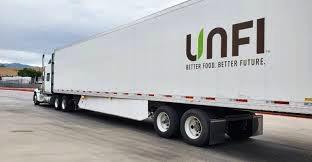

|
The National Labor Relations Board (NLRB) has ruled that United Natural Foods Inc. (UNFI) cannot outsource driver positions to non-union companies including J.B. Hunt in Florida. United Natural Foods entered into an agreement with the trucking company following an attempt at unionization by drivers. The NLRB issued its decision based on the lack of “pertinent evidence that the 80 truck drivers would not be laid off”. The Board has demonstrated a decided tilt towards unions under the current Administration. issued its decision based on the lack of “pertinent evidence that the 80 truck drivers would not be laid off”. The Board has demonstrated a decided tilt towards unions under the current Administration.
Tom Erickson of the Teamsters Union, Warehouse Division stated, “The UNFI attempt to outsource jobs was nothing more than a desperate union-busting tactic to stop drivers from becoming Teamsters.” He added, “This ruling reaffirms workers’ right to representation in the workplace without interference from management.”
|

|
E15 Availability during Summer
|
04/25/2024 |
|
 The Environmental Protection Agency has approved an emergency waiver to allow E-15 blend to be sold through the summer of 2024. The waiver will constrain escalation in price of gasoline albeit be with a deterioration in miles per gallon based on the lower energy value of ethanol compared to gasoline. The Environmental Protection Agency has approved an emergency waiver to allow E-15 blend to be sold through the summer of 2024. The waiver will constrain escalation in price of gasoline albeit be with a deterioration in miles per gallon based on the lower energy value of ethanol compared to gasoline.
 The restraints to uptake of higher ethanol blends include incompatibility with older vehicles, limitations on the number of available multi-blend fuel dispensers and the need for additional storage tanks at depots and gas stations. The restraints to uptake of higher ethanol blends include incompatibility with older vehicles, limitations on the number of available multi-blend fuel dispensers and the need for additional storage tanks at depots and gas stations.

|
Sanovo Training Program
|
04/25/2024 |

|
Zipline Completes One Million Drone Deliveries
|
04/25/2024 |
|
 Zipline, a pioneer in drone delivery, has announced completion of one million deliveries on behalf of major retailers including Walmart and various health systems. Zipline recently entered into agreements with Panera Bread and Jet’s Pizza for home deliveries in select markets. Zipline, a pioneer in drone delivery, has announced completion of one million deliveries on behalf of major retailers including Walmart and various health systems. Zipline recently entered into agreements with Panera Bread and Jet’s Pizza for home deliveries in select markets.

By the end of summer, Zipline will have expanded delivery to serve 30 million in ten states.

|
Sanovo Introduces GraderPro 800
|
04/25/2024 |
|
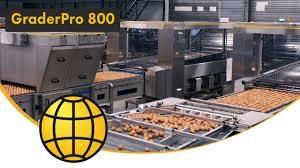 Sanovo Technology Group has introduced the GraderPro 800 with a capacity of 288,000 eggs per hour corresponding to 800 cases. To accommodate this volume the system incorporates two infeed lines. The tunnel operates with eight tracks allowing the GraderPro 800 to operate at a track speed approximately 25 percent lower than competitors’ graders. Sanovo Technology Group has introduced the GraderPro 800 with a capacity of 288,000 eggs per hour corresponding to 800 cases. To accommodate this volume the system incorporates two infeed lines. The tunnel operates with eight tracks allowing the GraderPro 800 to operate at a track speed approximately 25 percent lower than competitors’ graders.
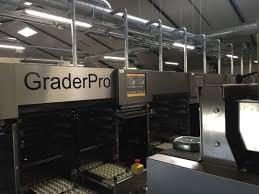
The GraderPro installation features cleaning in place, recycling of ‘grey’ water and cleaning of modules without disassembly. All machine parts incorporate approved food-contact material. Operation and monitoring is based on an advanced touchscreen console.
Modules compatible with the GraderPro 800 include the Sanovo OptiAccumulator with a compatible OptiLoader, UV disinfection, VisionAI grading, Blood Detector and Inkjet Printing to conform to EU requirements. Configuration of the installation allows for a small footprint relative to volume permitting retrofitting in existing plants and reducing the required floor area for new buildings.
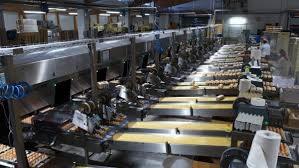
The GraderPro 800 incorporates egg tracking to farm or flock of origin for comprehensive traceability.

|
Rep. David Scott Urges Bipartisan Approach to Farm Bill
|
04/25/2024 |
|
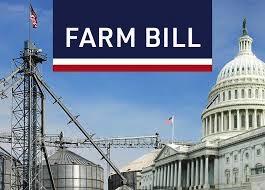 Representative David Scott (D-GA) has urged compromise with respect to passage of the delayed farm bill. At issue is a demand by the majority members of the House Agricultural Committee to cut $30 billion from the Thrifty Food Plan and also to transfer funding from land conservation to support crop subsidies. The majority is also promoting a bipartisan approach to apply Commodity Credit Corporation funds for livestock and crop support in the event of national disasters or trade wars. Representative David Scott (D-GA) has urged compromise with respect to passage of the delayed farm bill. At issue is a demand by the majority members of the House Agricultural Committee to cut $30 billion from the Thrifty Food Plan and also to transfer funding from land conservation to support crop subsidies. The majority is also promoting a bipartisan approach to apply Commodity Credit Corporation funds for livestock and crop support in the event of national disasters or trade wars.
 A 22-year member of the House Agriculture Committee, Rep. Scott “condemns the politics of division” and warns that the House will not approve a partisan bill, a clear message to Chairman, Rep. Glenn Thompson (R-PA) who intends moving the legislation out of Committee during May. A 22-year member of the House Agriculture Committee, Rep. Scott “condemns the politics of division” and warns that the House will not approve a partisan bill, a clear message to Chairman, Rep. Glenn Thompson (R-PA) who intends moving the legislation out of Committee during May.

|
WunderEggs Wins Albertsons Innovation Contest
|
04/25/2024 |
|
 Crafty Counters, Inc. producers of WunderEggs won the second Annual Innovation Launchpad at the Natural Products, Expo-West held in Anaheim, CA. The product comprises a plant-based egg substitute containing almonds, coconut milk, spices, and salt. From the illustration the product resembles the plastic food displayed in front windows of restaurants in Japan Crafty Counters, Inc. producers of WunderEggs won the second Annual Innovation Launchpad at the Natural Products, Expo-West held in Anaheim, CA. The product comprises a plant-based egg substitute containing almonds, coconut milk, spices, and salt. From the illustration the product resembles the plastic food displayed in front windows of restaurants in Japan
 Recognition of the product together with a $163,000 prize from Albertson’s Corp has increased awareness of WunderEggs and has generated orders. Recognition of the product together with a $163,000 prize from Albertson’s Corp has increased awareness of WunderEggs and has generated orders.
The question remains as to the price of the product and also nutritional value compared to real eggs. It is understood that WunderEggs is available as a hard-boiled presentation that limits servings that could be achieved with conventional eggs and egg liquids.

|
Hotraco Agri to Present Seminar on Egg-collection Systems
|
04/24/2024 |
|
 Hotraco Agri will present an open seminar in Portland, IN. on June 6th at the Holiday Inn Express and Suites. The program will feature Hotraco Central Egg Collection and a new Egg Flow Control System. Hotraco Agri will present an open seminar in Portland, IN. on June 6th at the Holiday Inn Express and Suites. The program will feature Hotraco Central Egg Collection and a new Egg Flow Control System.
 Speakers will include Frank Schreurs, Sale Director and Eric Hagens, Product Manager at Hotraco. Topics to be reviewed include technology of egg collection to achieve optimal egg flow. Speakers will include Frank Schreurs, Sale Director and Eric Hagens, Product Manager at Hotraco. Topics to be reviewed include technology of egg collection to achieve optimal egg flow.  These aspects of the management of in-line complexes are important in reducing shell downgrades and also attaining high grader efficiency to reduce labor costs. For further information and registration access www.hotraco-agri.com These aspects of the management of in-line complexes are important in reducing shell downgrades and also attaining high grader efficiency to reduce labor costs. For further information and registration access www.hotraco-agri.com

|
Additional Kroger-Albertson Divestiture Plan Rejected by FTC
|
04/24/2024 |
|
 In an attempt to appease the Federal Trade Commission (FTC), The Kroger Company and Albertsons Companies announced that 166 additional stores will be added to the list that will be divested to C&S Wholesale Grocers for a total of 579 locations. In an attempt to appease the Federal Trade Commission (FTC), The Kroger Company and Albertsons Companies announced that 166 additional stores will be added to the list that will be divested to C&S Wholesale Grocers for a total of 579 locations.
According to a Kroger press release, C&S will operate the Safeway banner in Arizona and Colorado and will license the Albertsons banner in California and Wyoming. Presumably this will be convenient for Kroger and Albertsons should the anticipated transaction be concluded and subsequently C&S goes the way of Haggen after the Safeway transaction in 2016.
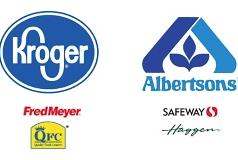 The merger elicited a negative response from the FTC. The Agency stated, “The proposal completely ignores many affected regional and local markets where Kroger and Albertsons compete today.” The statement added, “In areas where there are divestitures, the proposal fails to include all of the access, resources and capabilities C&S will need to replicate the competitive intensity that exists today between Kroger and Albertsons. Even if C&S were to survive as an operation, Kroger and Albertsons proposed divestitures still do not solve the multitude of competitive issues created by the proposed acquisition.” The merger elicited a negative response from the FTC. The Agency stated, “The proposal completely ignores many affected regional and local markets where Kroger and Albertsons compete today.” The statement added, “In areas where there are divestitures, the proposal fails to include all of the access, resources and capabilities C&S will need to replicate the competitive intensity that exists today between Kroger and Albertsons. Even if C&S were to survive as an operation, Kroger and Albertsons proposed divestitures still do not solve the multitude of competitive issues created by the proposed acquisition.”
In support of the proposed merger/acquisition, the CEO of The Kroger Company, Rodney McMullen stated, “Our proposed merger with Albertsons will bring lower prices and more choices to more customers and secure the long-term future of unionized grocery jobs.” McMullen noted that the divestiture plan would ensure that no stores will close, and all frontline associates will remain employed with continuation of existing collective bargaining agreements. The Kroger Company intends to support C&S operations “through expanded transition services.”

|
WOAH Concerned over HPAI Impact on Wildlife
|
04/24/2024 |
|
 In a mid-March statement, the World Organization of Animal Health (WOAH) warned of the threat to wildlife from highly pathogenic avian influenza. The statement was prompted by a diagnosis of H5N1 HPAI in skuas collected by scientists at the Primavera Antarctic Research Base operated by Argentine. The WOAH statement included, “Once considered primarily a threat to poultry, HPAI has ushered in a new normal whereby HPAI is moving from wild birds to wild mammals with impacts beyond anything previously seen.” The statement continued, “At the latest count there have been 485 species from over 25 avian orders affected and 37 new mammal species infected since 2021. Only the Pacific Islands, Australia and New Zealand remain free of the disease, but the situation is changing rapidly.” In a mid-March statement, the World Organization of Animal Health (WOAH) warned of the threat to wildlife from highly pathogenic avian influenza. The statement was prompted by a diagnosis of H5N1 HPAI in skuas collected by scientists at the Primavera Antarctic Research Base operated by Argentine. The WOAH statement included, “Once considered primarily a threat to poultry, HPAI has ushered in a new normal whereby HPAI is moving from wild birds to wild mammals with impacts beyond anything previously seen.” The statement continued, “At the latest count there have been 485 species from over 25 avian orders affected and 37 new mammal species infected since 2021. Only the Pacific Islands, Australia and New Zealand remain free of the disease, but the situation is changing rapidly.”
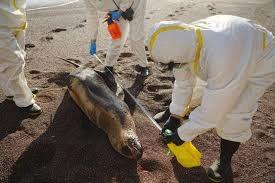
The WOAH Working Group on Wildlife has produced guidelines on vaccination of species under conservation. California Condors have been vaccinated under special license in the U.S. following mortality presumably from scavenging dead waterfowl.
The WOAH notes that the magnitude of losses “at the current scale presents an unprecedented risk of wildlife population collapse creating an ecological crisis.”
The WOAH emphasizes the need for interagency coordination and collection of data through the World Animal Health Information System.
EGG-NEWS has reported on outbreaks involving high mortality in numerous wild avian species including cranes in Israel and India, swans in the E.U., Dalmatian pelicans and endangered barnacle geese. (retrievable by entering “avian influenza” in the SEARCH block). The recovery of H5N1 HPAI virus from free-living birds including grackles and blackbirds associated with bovine influenza-H5N1 suggests that the infection is now endemic in the U.S. and is not confined to migratory waterfowl.

|
France Implementing Vaccination Program
|
04/24/2024 |
|

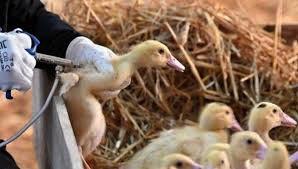
|
Following successive years of severe losses as a result of exposure to HPAI, France initiated a preventive vaccination program in ducks and geese reared for the foie gras segment of their poultry industry. To date 26 million waterfowl have received the initial dose of vaccine with 21 million receiving a second booster dose.
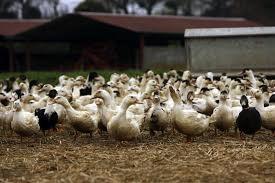
During the 2022-2023 epornitic of HPAI, 315 farm outbreaks were recorded with 22 million commercial birds depopulated. Since the autumn of 2023, ten cases have been diagnosed.
The success of the vaccination program will be confirmed by an analysis of data relating to outbreaks following a complete season with direct comparisons between vaccinated and non-vaccinated susceptible flocks.
|

|
Crimson Holdings LLC files for Chapter 11 Protection
|
04/24/2024 |
|

On April 8th, Crimson Holdings LLC an egg breaking enterprise located in Adrian Wisconsin filed for Chapter 11 protection.

The facility was the production unit of OvaInnovations Inc. and was converted to processing inedible product from a milk drying plant. From the inception of operation, the plant was associated with resident complaints over odor, investigated by the state environmental agency. The operation was embroiled in legal action including a dispute with IsoNova Technologies LLC.

David Rettig was the moving force behind OvaInnovations Inc. Rettig was instrumental in establishing Rembrandt Enterprises in 1999 with financing provided by entrepreneur Glenn Taylor of Minneapolis. In 2009 Rembrandt acquired Golden Oval eggs. Rembrandt was impacted by two episodes of highly pathogenic avian influenza. The production facility in Rembrandt, Iowa is now owned and operated by AGR Partners.

|
Farmerboy Barntalk
|
04/24/2024 |

|
Target Lawsuit over Biometrics Surveillance
|
04/24/2024 |
|
 The Biometric Information Privacy Act enacted in 2008 in the state of Illinois provided protection to customers from undisclosed collection and use of biometric data. The Biometric Information Privacy Act enacted in 2008 in the state of Illinois provided protection to customers from undisclosed collection and use of biometric data.
Target along with numerous retailers is plagued with theft and has introduced systems to identify serial shoplifters. The Illinois Act makes it unlawful for a company to “collect, capture, purchase, receive or otherwise obtain a person’s biometric identifiers without informed consent and approval in writing.”
The application of biometric surveillance is highly contentious. Rite Aid agreed to cease using facial recognition technology following action by the Federal Trade Commission. Defects in the technology used incorrectly identified innocent shoppers as potential serial shoplifters.
Facial recognition technology has many drawbacks including differentiation among people of color. Identifying individuals in large groups is practiced by the Government of the People’s Republic of China to identify political dissidents and potential provocateurs in street gatherings.

|
Sale of Grubhub Contemplated
|
04/24/2024 |
|
 Parent company Just Eat based in the Netherlands is actively seeking a buyer for their Grubhub operation in the U.S. Parent company Just Eat based in the Netherlands is actively seeking a buyer for their Grubhub operation in the U.S.

Just Eat processed 214 million orders in all their operations during the first quarter of FY 2024, down six percent from the corresponding quarter of FY 2013. Transaction value was down 1.8 percent to $7.0 billion for the most recent quarter.

|
Albertson’s Posts 4th Quarter and FY 2023 Financial Results
|
04/23/2024 |
|
 In an April 22nd 2024 release, Albertson’s Companies (ACI) posted financial results for the 4th quarter and fiscal 2023 ending February 24th 2024. Earnings were consistent with expectations but sales were lower than consensus estimates. As the second largest pure-grocery company, Albertson’s can be regarded as a bellwether for the retail food industry, subject to increased costs of foods, labor, and transport in a competitive consumer environment impacted by inflation as reflected in low net margins among competitors. In an April 22nd 2024 release, Albertson’s Companies (ACI) posted financial results for the 4th quarter and fiscal 2023 ending February 24th 2024. Earnings were consistent with expectations but sales were lower than consensus estimates. As the second largest pure-grocery company, Albertson’s can be regarded as a bellwether for the retail food industry, subject to increased costs of foods, labor, and transport in a competitive consumer environment impacted by inflation as reflected in low net margins among competitors.
Albertsons operates 2,270 stores under 21 banners including Albertson’s, Safeway, Von’s, Acme, Jewel-Osco and Shaw’s. Albertson’s Companies posted a 1.0 percent increase in same-store sales during the most recent quarter with a 24 percent increase in digital sales over the corresponding Q4 of FY 2022. Loyalty membership increased 16 percent to 39.8 million.
For Q4 net income was $280.5 million on total revenue of $18,340 million. Comparable figures for the fourth quarter of fiscal 2022 ending February 25th 2023 were net income of $311.1 million on total revenue of $18,265 million. Diluted EPS for Class A shares for the most recent quarter was $0.43 down from $0.54 for Q4 FY 2022. Gross margin increased fractionally from 27.8 percent to 28.0 percent denoting minor reduction in cost of goods sold reflecting deflation. Operating income decreased from 2.4 percent in Q4 FY 2022 to 2.3 percent. During Q4 FY 2022 Albertsons recorded a $61.4 million gain on property disposition and $9.5 million assigned to the ‘other income’ category.
For FY 2023 net income was $1,296 million on total revenue of $79,238 million with a diluted EPS of $2.23. Comparable figures for fiscal 2022 ending February 26th 2023 were net income of $1,514 million on total revenue of $77,650 million with a diluted EPS of $2.27
In commenting on results CEO Vivek Sankaran stated, “We delivered another solid quarter amidst a difficult industry backdrop. Again during this quarter, we focused on our strategy to create Customers for Life, which drove strong growth in digital and pharmacy, deepened our omnichannel relationships with our customers and improved our in-store experience”.

Sankaran concluded, "We expect to face ongoing headwinds posed by investments in associate wages and benefits, cycling significant prior year food inflation, lower government assistance for our customers, declining COVID-related income, and the increasing mix of our pharmacy and digital businesses, which carry lower margins. We expect these headwinds to be much stronger in the first half of fiscal 2024. These headwinds are expected, to be partially offset by ongoing productivity initiatives."
On Friday October 14th 2022 Kroger announced a bid for Albertson’s offering $34 per share and assuming $4.7 billion in debt in a $25 billion transaction. The acquisition would at the least have required divestment of stores among in areas with an overlap. Several U.S. senators, states Attorneys General and unions representing Albertson’s workers oppose the transaction. The parties to the merger offered to spin off 413 stores and eight DCs to C&S Wholesalers, since increased by an additional 166 stores. The combined company would invest in worker benefits, devote $1 billion of working capital to reduce prices and would recognize unions.
On January 15th in advance of a Federal Trade Commission decision, the parties issued a joint statement “We remain in active and ongoing dialogue with the FTC and individual state Attorneys General regarding our proposed merger and divestiture plan. We believe our merger with Albertsons and the comprehensive divestiture to C&S will result in the best outcomes for customers, associates and our communities”.
The FTC sued to block the merger in mid-February 2024 supported by eight states and Washington DC. with a hearing to commence on August 12th 2024.
Albertson’s Corporation posted assets of $26,221 million including $3,636 million in goodwill and intangibles, against long-term debt and lease obligations of $15,207 million. The Company had an intraday market capitalization of $11,630 million on April 23rd 2014. ACI trades with a forward P/E of 7.8 and has ranged over a 52-week period from $19.88 to $23.88 with a 50-day moving average of $20.89. Approximately 74 percent of equity is held by institutions with 14 percent by insiders. The Company attained a 12-month trailing operating margin of 2.7 percent and a profit margin of 1.6 percent. Return on assets was 5.6 percent and 58.9 percent on equity.

|
Cooper Farms Donates $50,000 to Mercer Health
|
04/21/2024 |
|
 In an April 17th announcement, Cooper Farms donated $50,000 to a new obstetrical facility to be included in the renovated Mercer County Community Hospital. The project to allow for in-county specialist obstetrical services and neonatal care was initiated with $1 million donation from the Walter and Evelyn Braun family trust. The Cooper Farms donation was included in an amount of $600,000 provided by philanthropic residents. In an April 17th announcement, Cooper Farms donated $50,000 to a new obstetrical facility to be included in the renovated Mercer County Community Hospital. The project to allow for in-county specialist obstetrical services and neonatal care was initiated with $1 million donation from the Walter and Evelyn Braun family trust. The Cooper Farms donation was included in an amount of $600,000 provided by philanthropic residents.
Ms. Deb Hemmelgarn, Director of the MED Foundation at Mercer Health commented, “ A successful campaign will ensure adequate funds to initiate the project. Childbirth centers continue to close throughout Ohio and the Nation. We are enhancing our services because of our commitment to our community”.
|
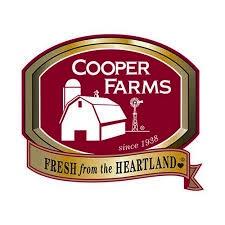
 |

|
Fur Farms in China Represent a Potential for the Emergence of Pandemics
|
04/21/2024 |
|
A review of fur farms in Hebei and Liaoning Provinces revealed risks for the emergence of pandemic strains of zoonotic viruses according to Dr. Alastair MacMillan of Surrey University, U.K. Holding as many as 4,000 animals of diverse species including foxes, raccoon dogs and mink represented a potential for viruses to undergo mutation and recombinant events. The risk was intensified by proximity to farms housing high concentrations of commercial poultry.

During the early stages of the COVID pandemic in China, restrictions were placed on fur farms in addition to the breeding and consumption of exotic animals as food. It appears that restrictions have either been ignored or rescinded.
EGG-NEWS is opposed to fur farming in the U.S., the E.U., China or anywhere else based on the fact that commercial production may lead to emergence of zoonotic viruses. The end-product of fur farming has as its objective satisfaction of vanity and ostentatious display of wealth.
|
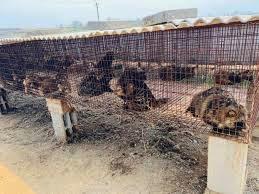

|

|
Concern in Latin America over El Nino Transition to a La Nina Event
|
04/21/2024 |
|
 Over many decades, the regular transition from El Nino to La Nina events with a neutral intermediate period has occurred over three-to-seven-year cycles. More recently, for conditions that are not fully understood, transitions are occurring over shorter periods and the intensity of drought associated with La Nina and floods and hurricanes concurrent with an El Nino are becoming more intense. Over many decades, the regular transition from El Nino to La Nina events with a neutral intermediate period has occurred over three-to-seven-year cycles. More recently, for conditions that are not fully understood, transitions are occurring over shorter periods and the intensity of drought associated with La Nina and floods and hurricanes concurrent with an El Nino are becoming more intense.
The International Research Center for the El Nino Phenomenon noted, “A year ago we came out of a La Nina and in March there were signs of a transition to El Nino. Rapid changes in the cycle will undoubtedly impact crop production with corresponding economic effects”.
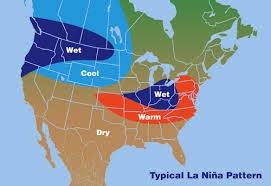
It is noted that the intense La Nina over the past three years was responsible for drought-reated low yields for crops in Chile and Peru. Reduced water flow through the Panama Canal, has restricted passage of vessels and has raised the cost of ocean transport. The ongoing El Nino was expected to restore water levels in the Canal but with an unexpected and abrupt return to a La Nina the unfavorable situation may persist.

|
California QSRs Raise Menu Prices Following FAST Act
|
04/21/2024 |
|
Following mandated wage increases in California, national QSR chains and casual dining restaurants have predictably raised menu prices, ostensibly to cover increased wage cost. In accordance with the FAST Act, the minimum wage for fast food chains was $20 per hour effective April 1st.

Studies have shown that menu prices started to rise in October 2023 disproportionately with the rest of the U.S. During March 2024, some fast food and fast casual restaurants increased menu prices by 16.5 percent. The average total increase in menu prices in California was 6.8 percent compared to the national average of 6.7 percent. Increases are regional according to market research company Datassential with higher prices in counties known to have high costs of living. Although the $20 per hour minimum is higher than the average state minimum wage, a shortage of workers resulted in increases in wage rates independently of the FAST Act. Menu increases are inevitable given that labor represents approximately one third of the cost of meals served.
|

 |

|
|
|
|
View More
|
Top
|
|